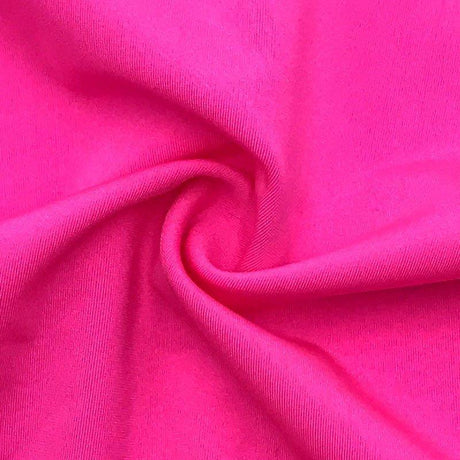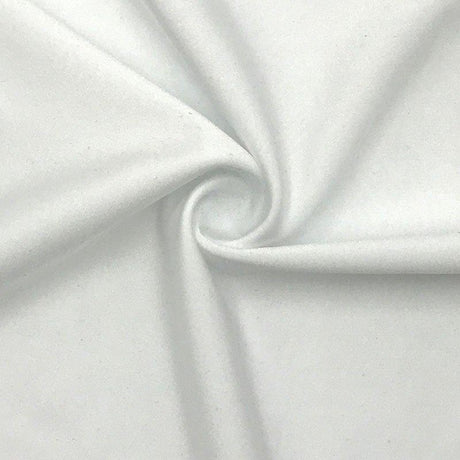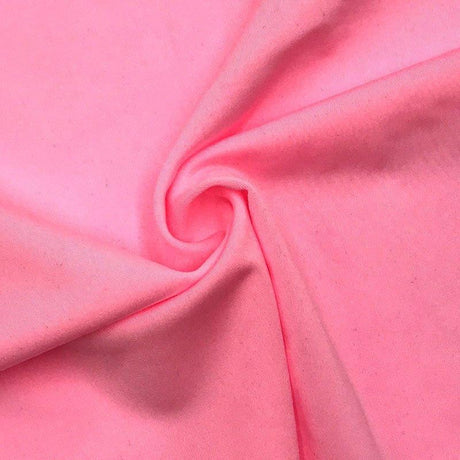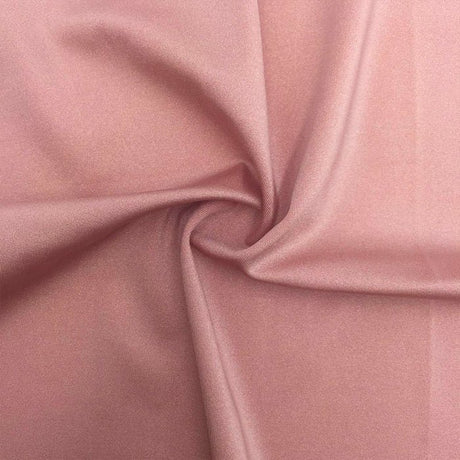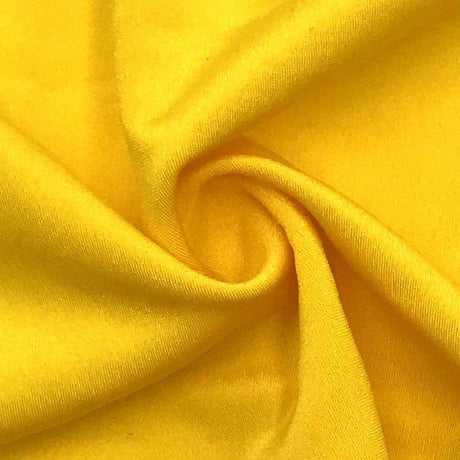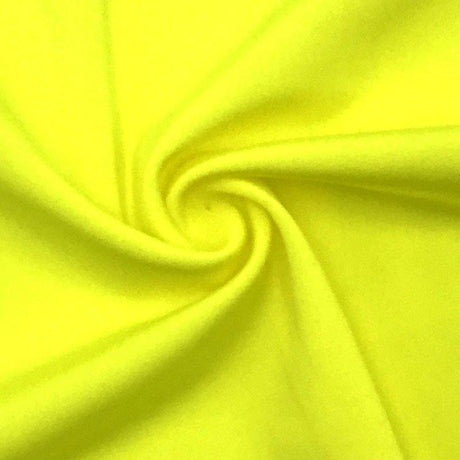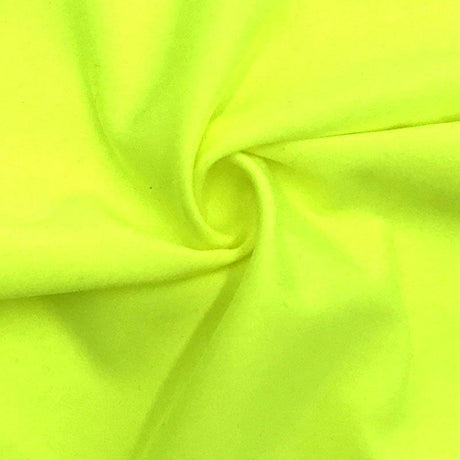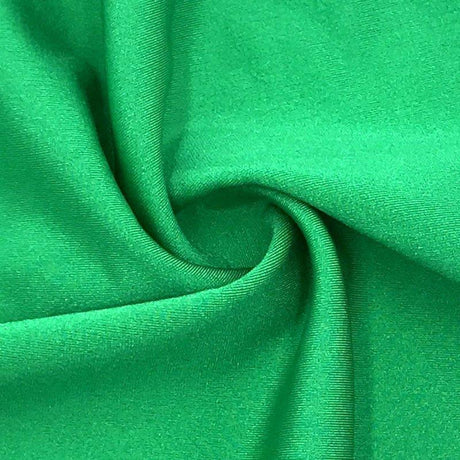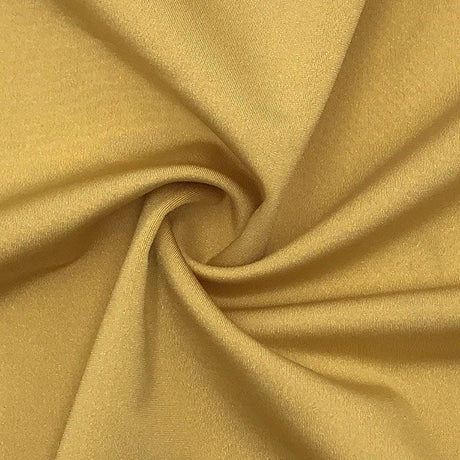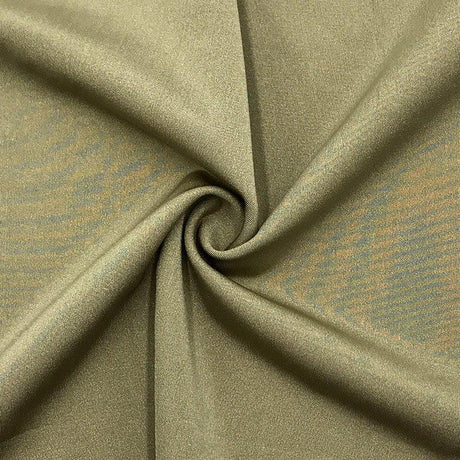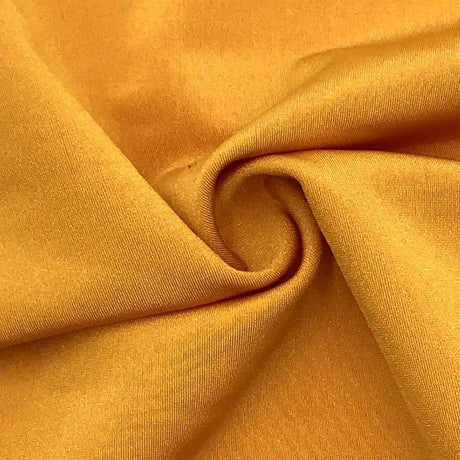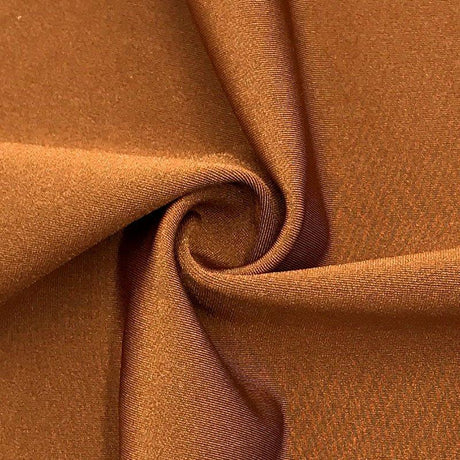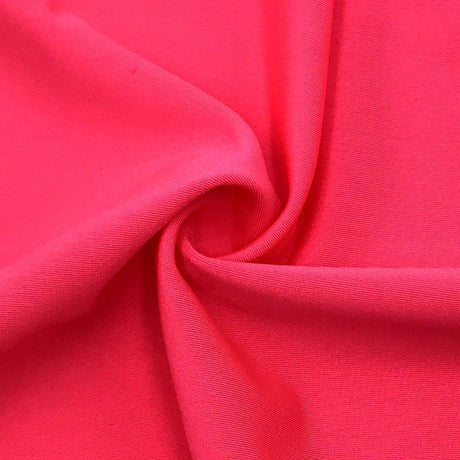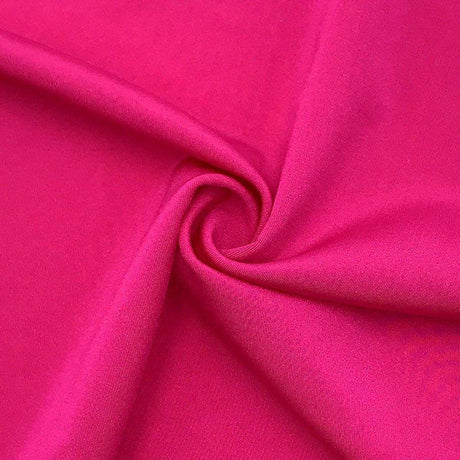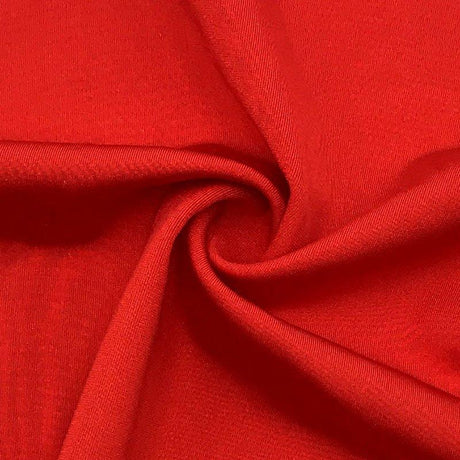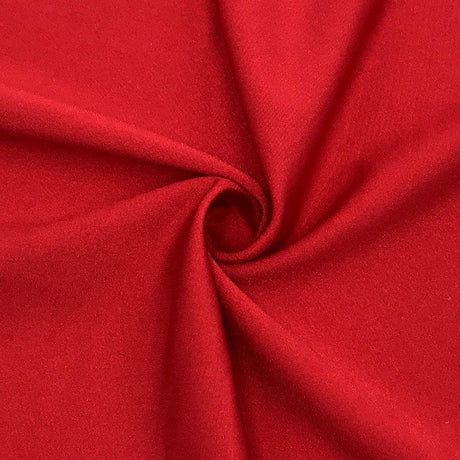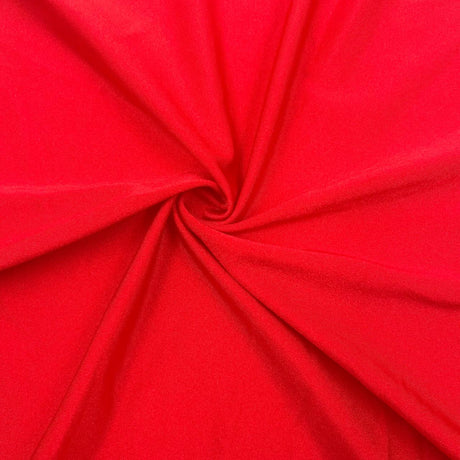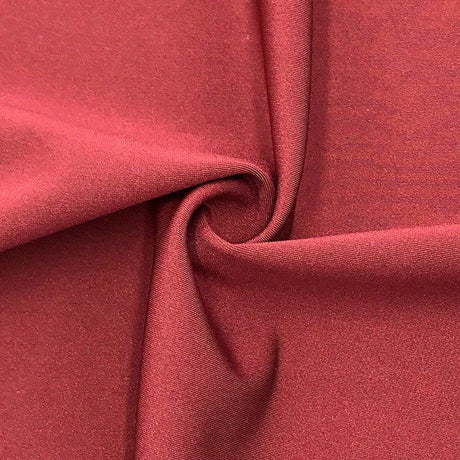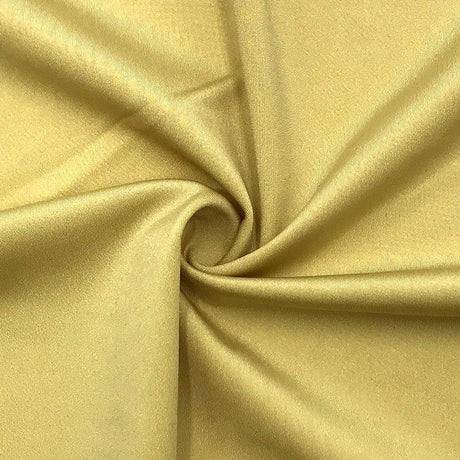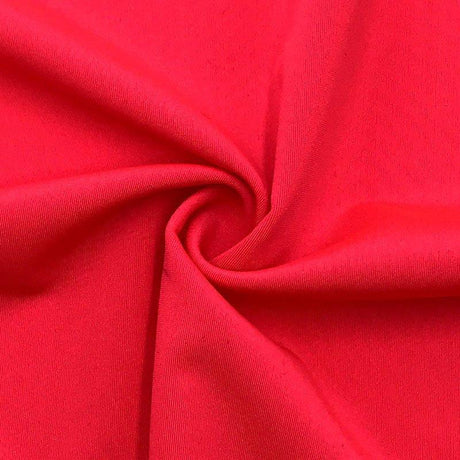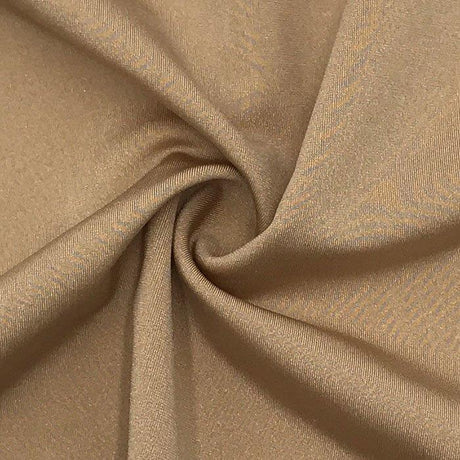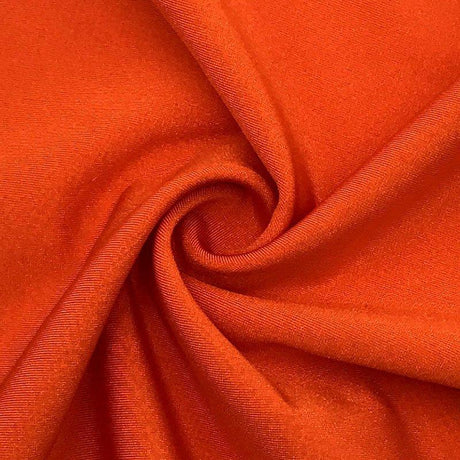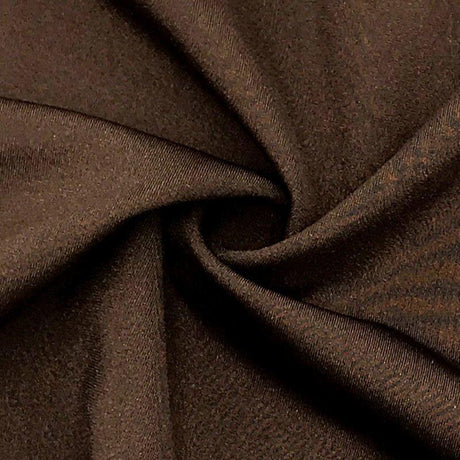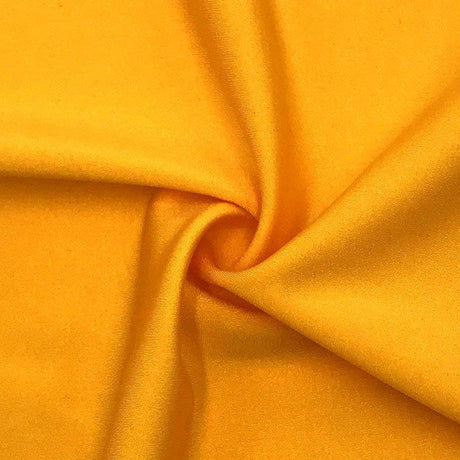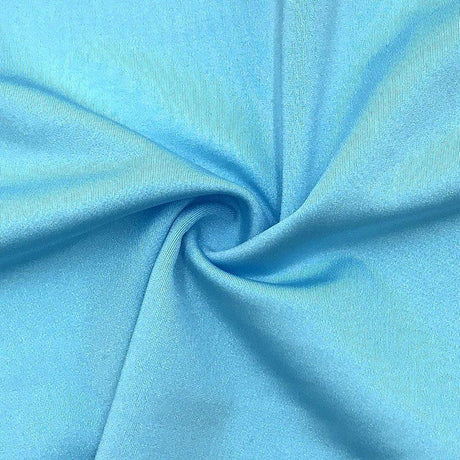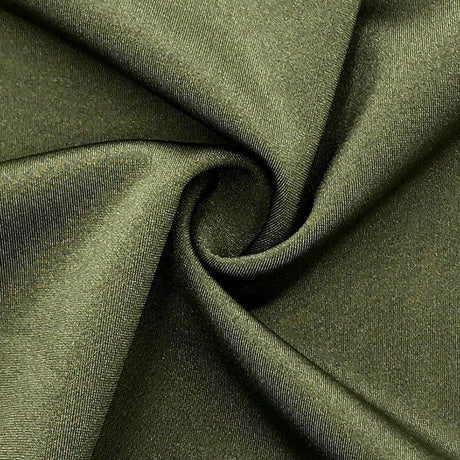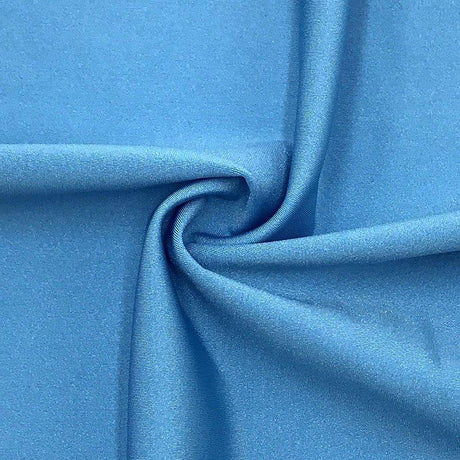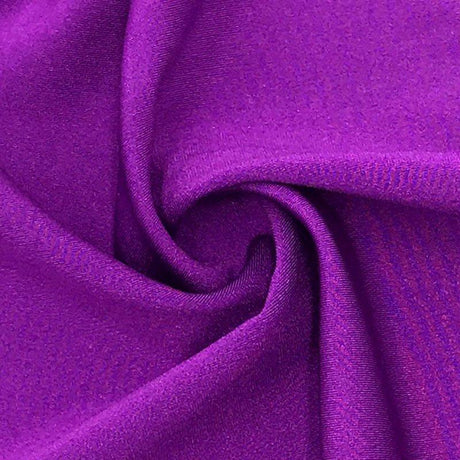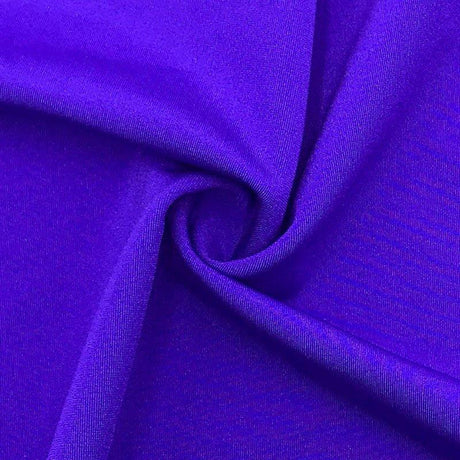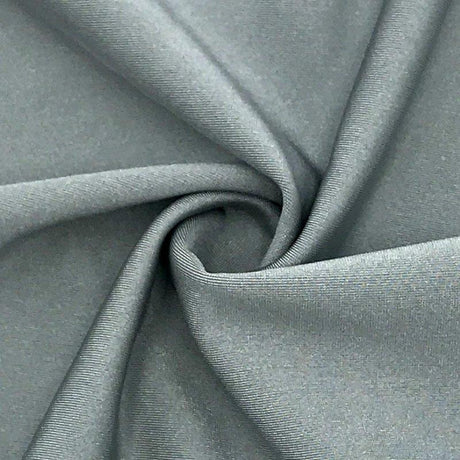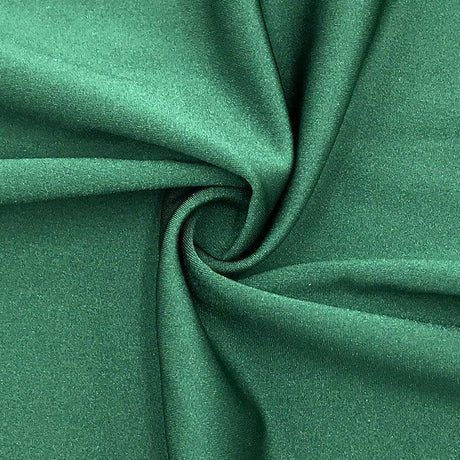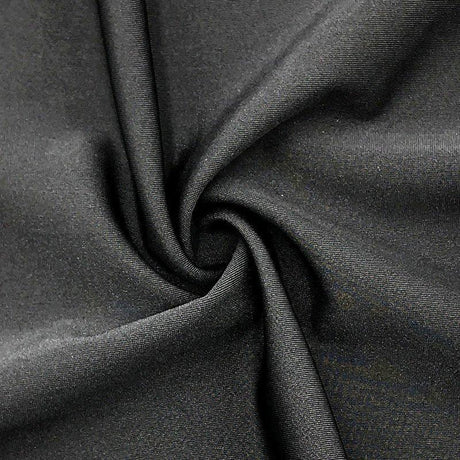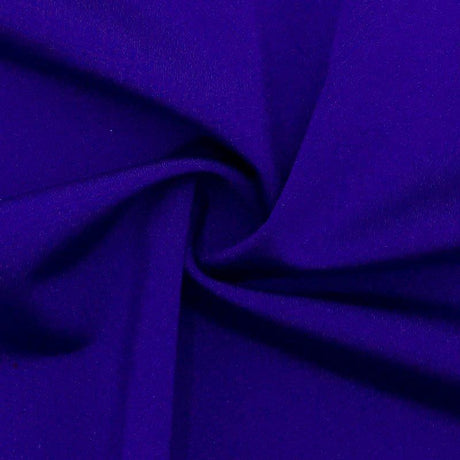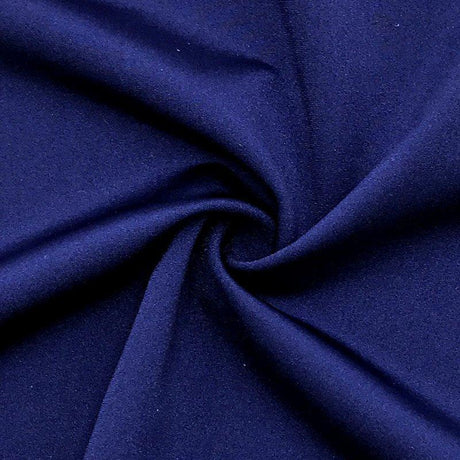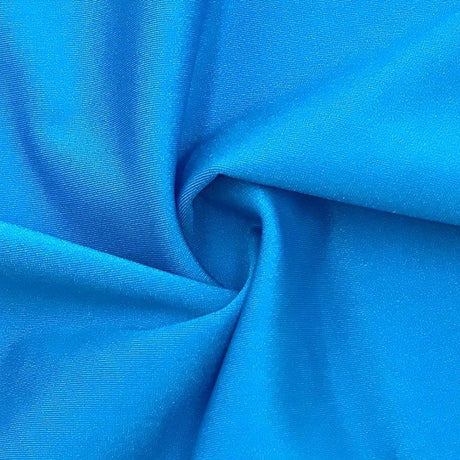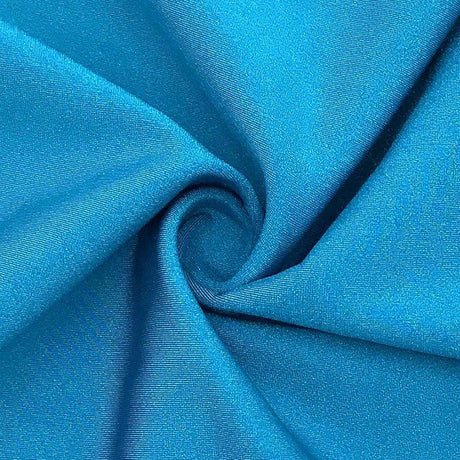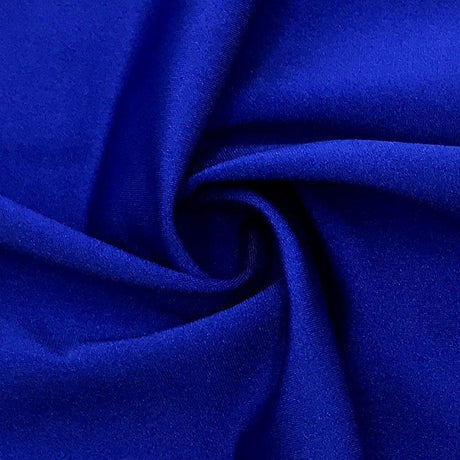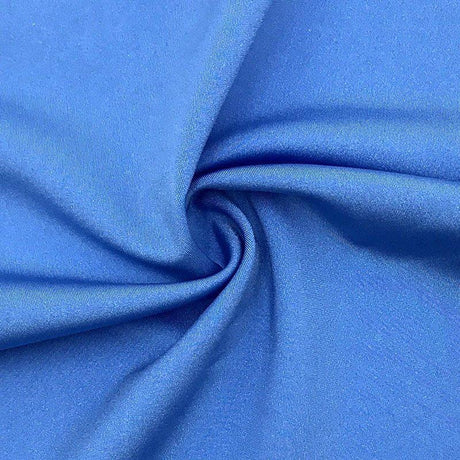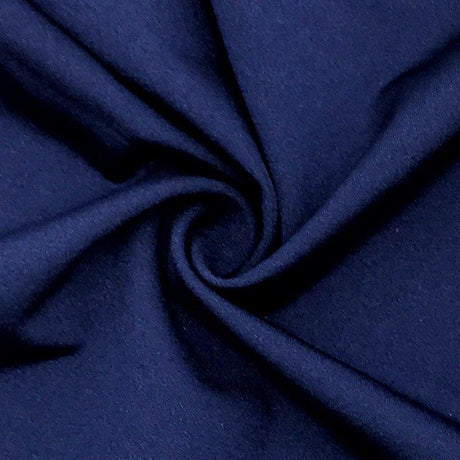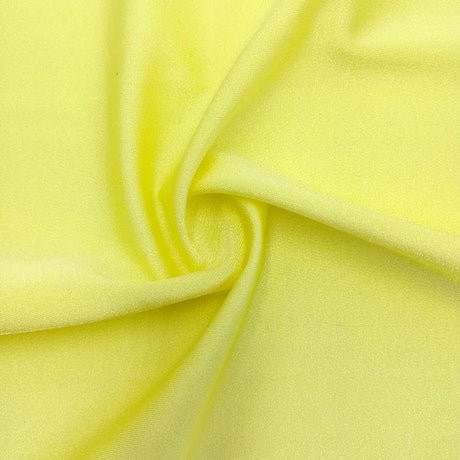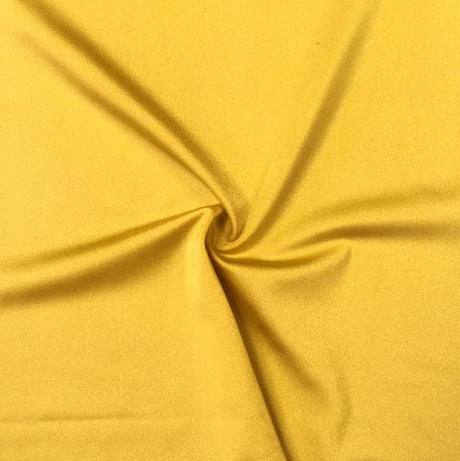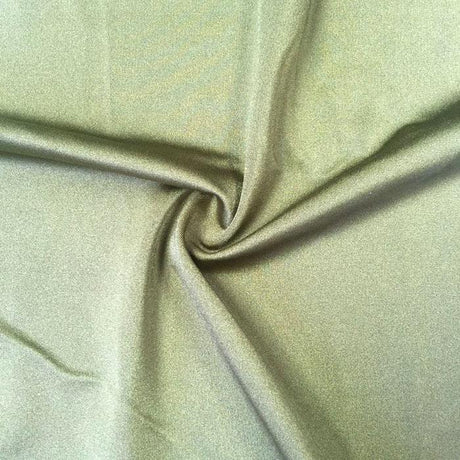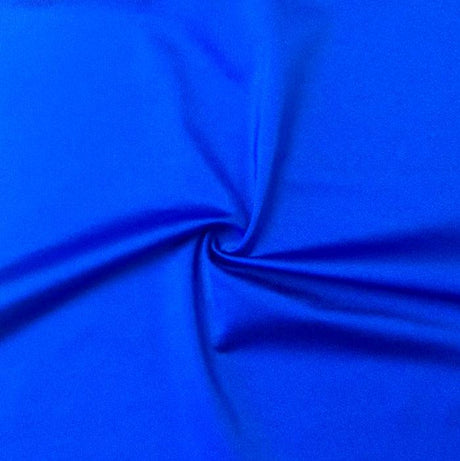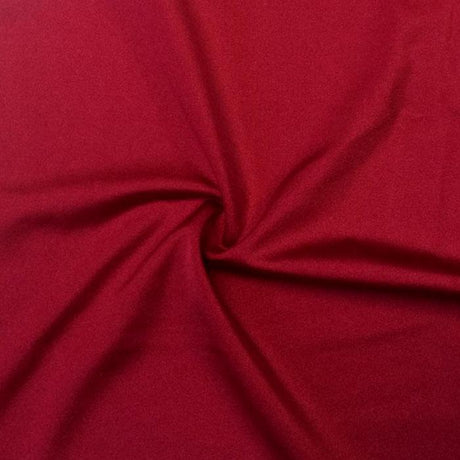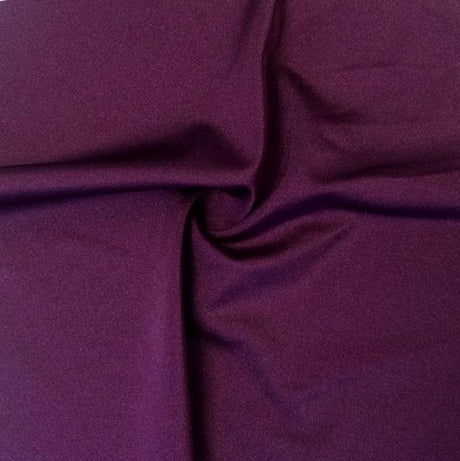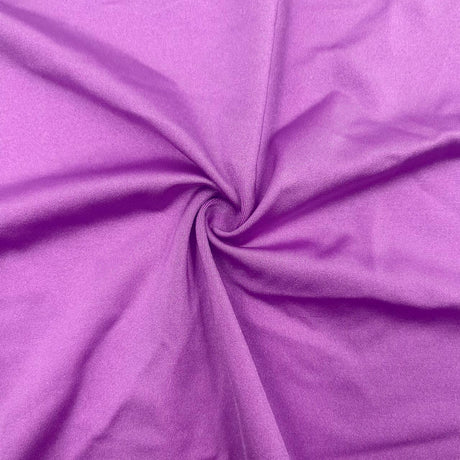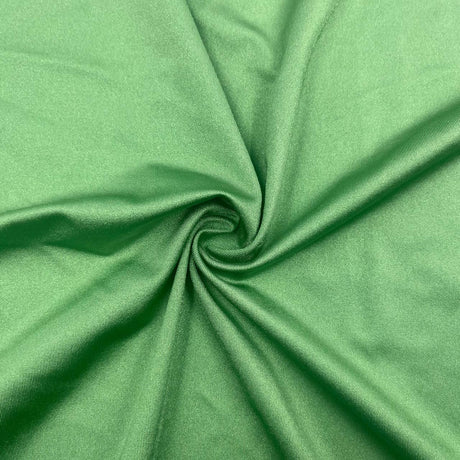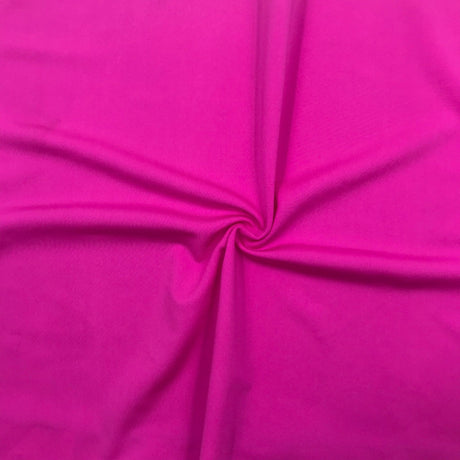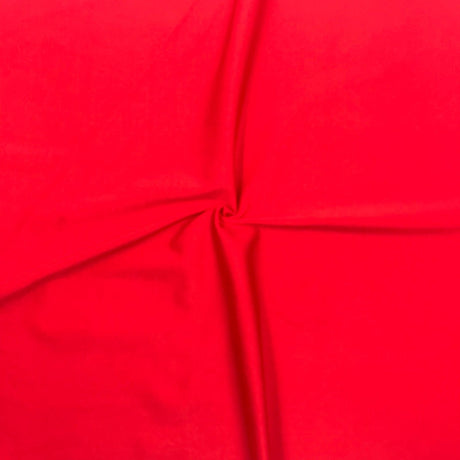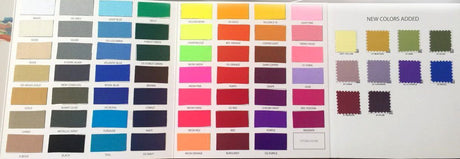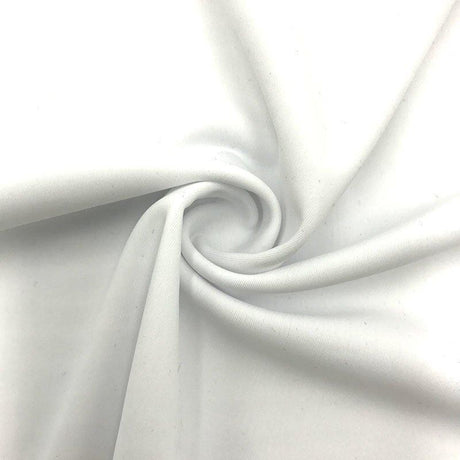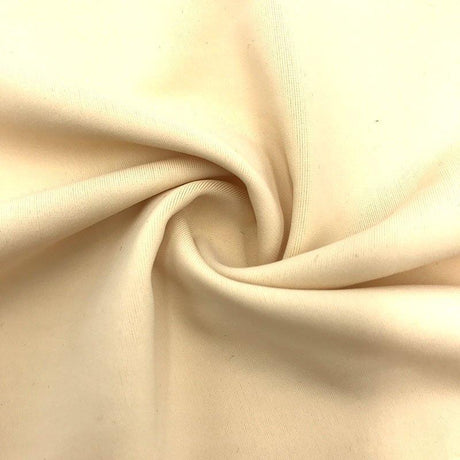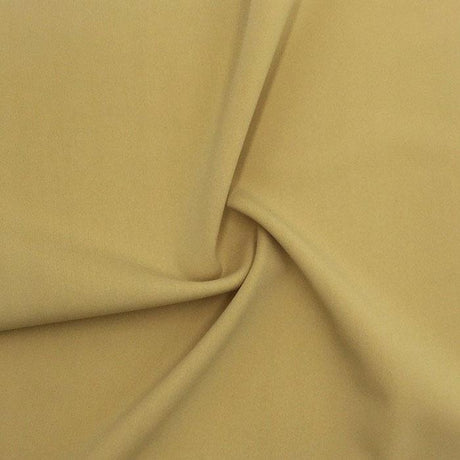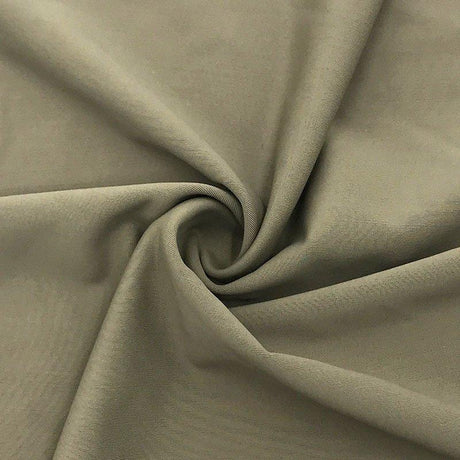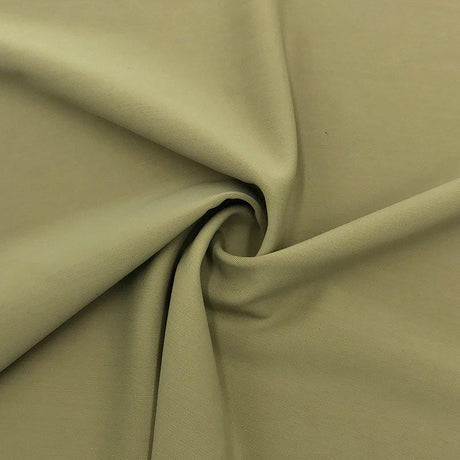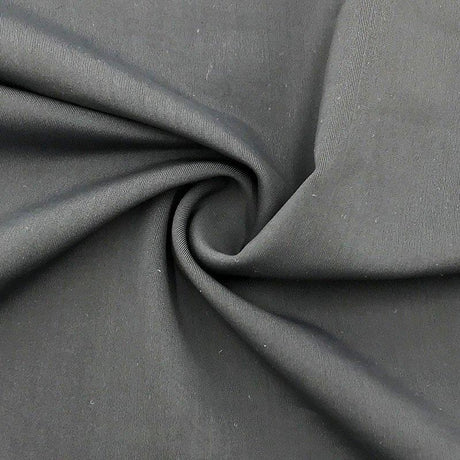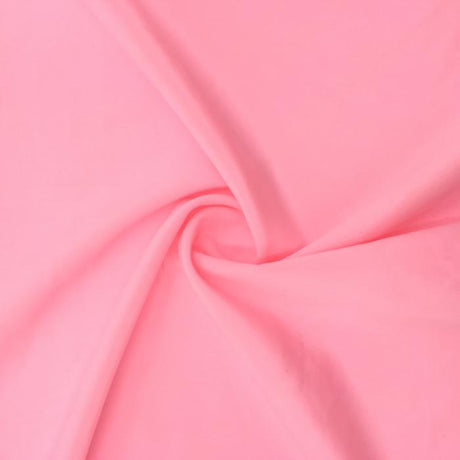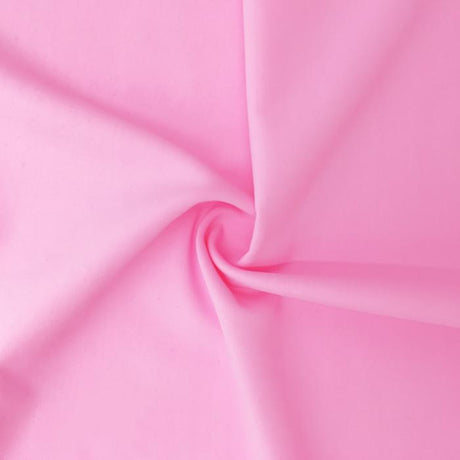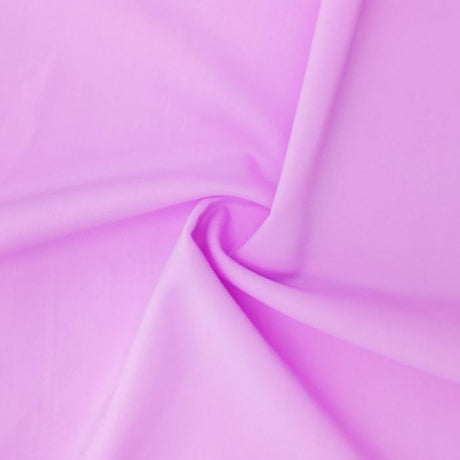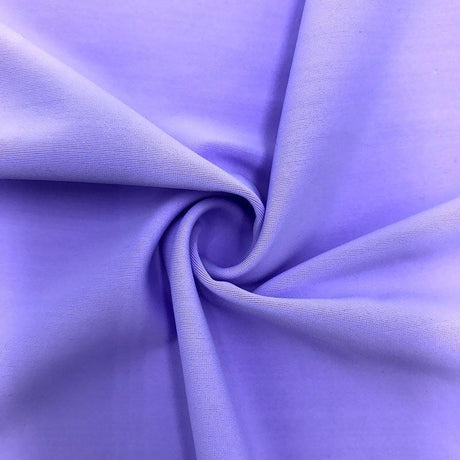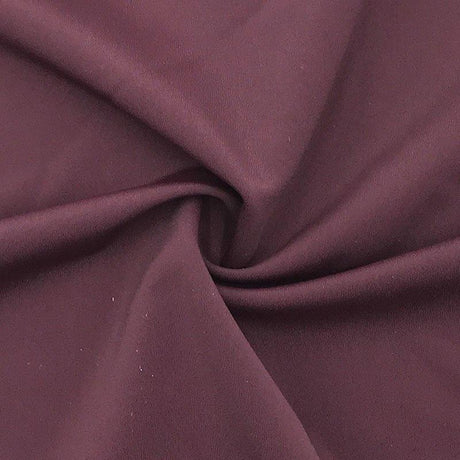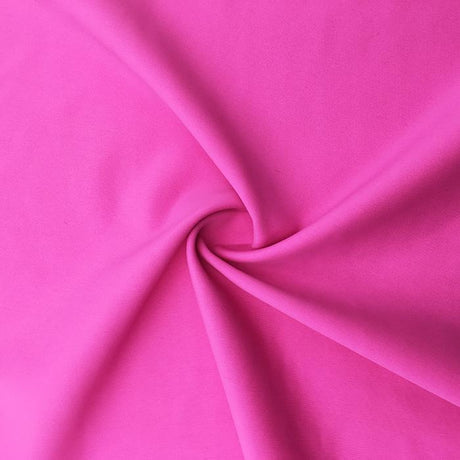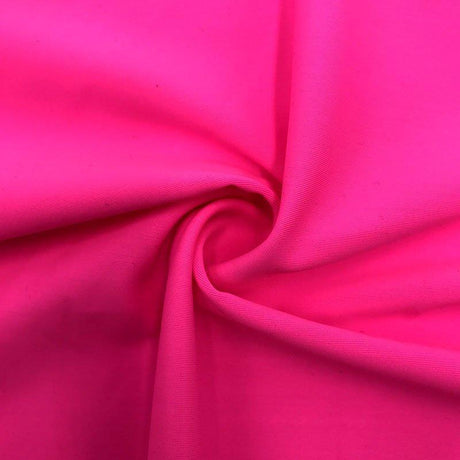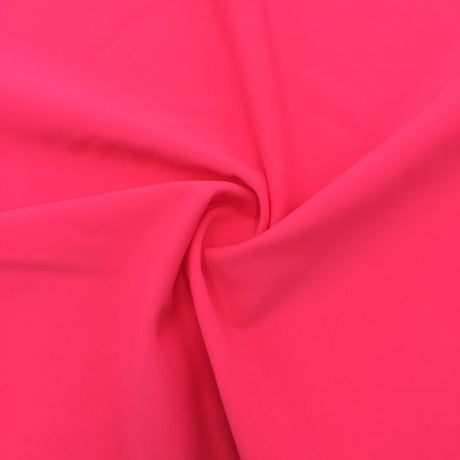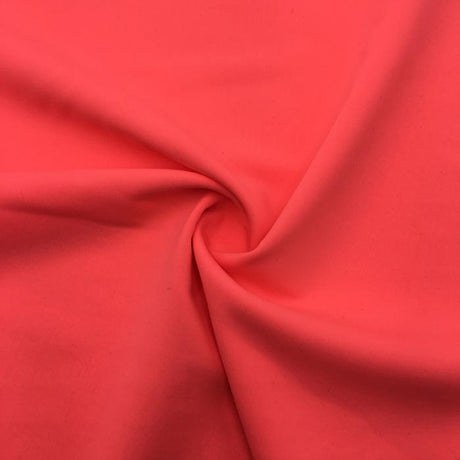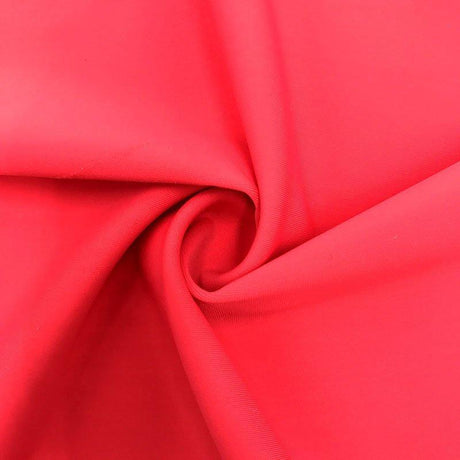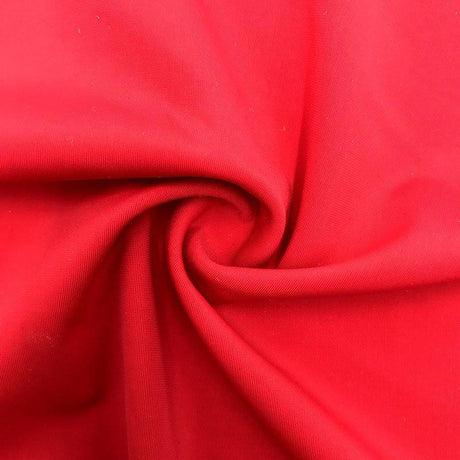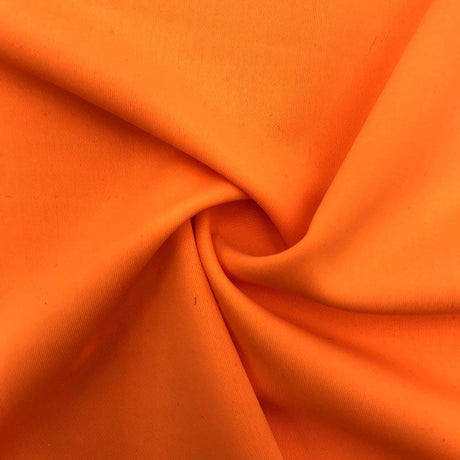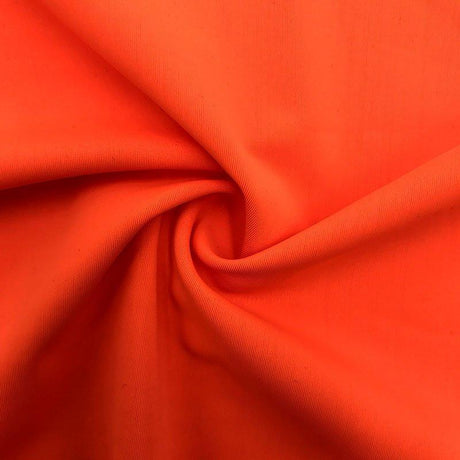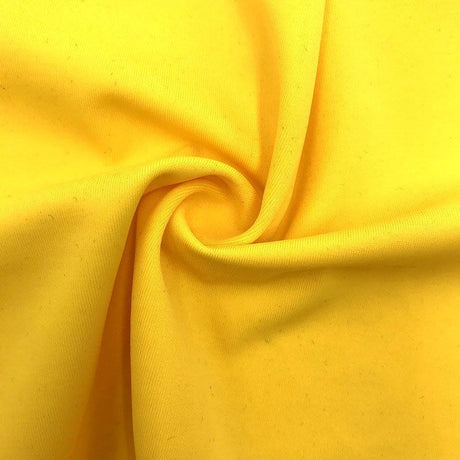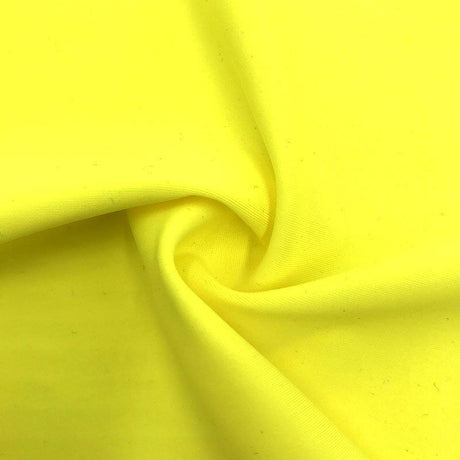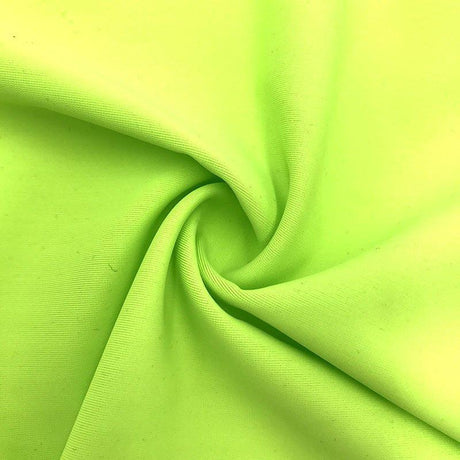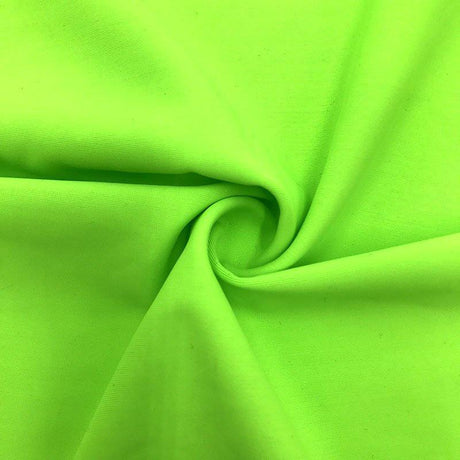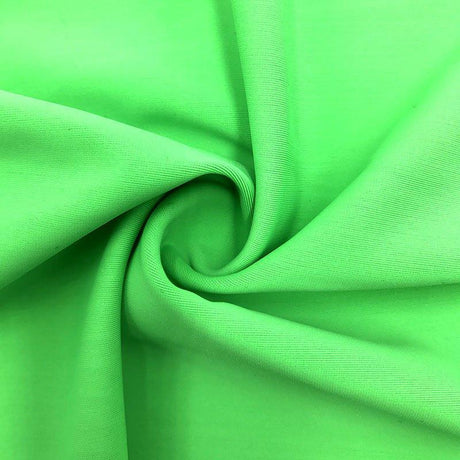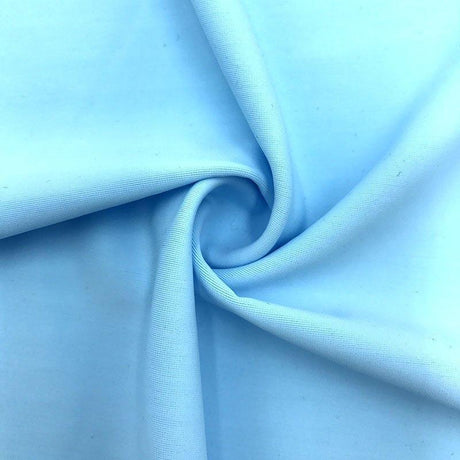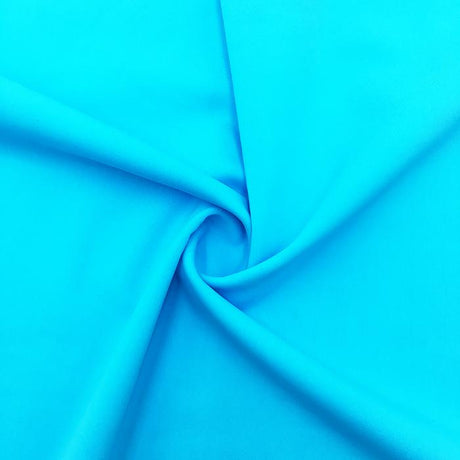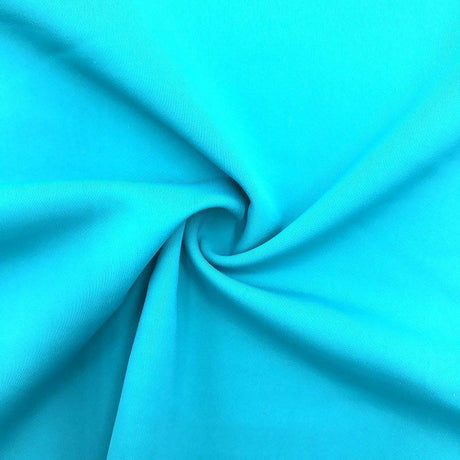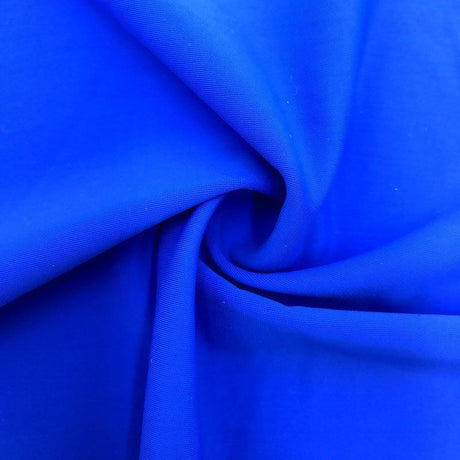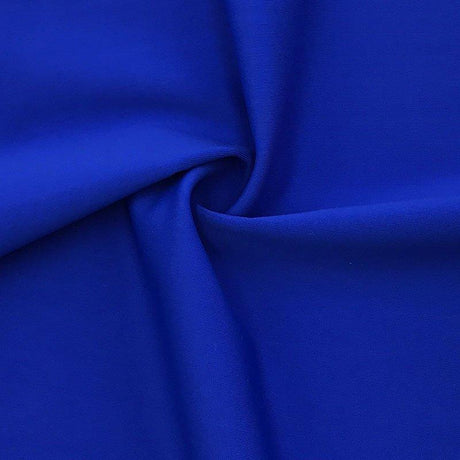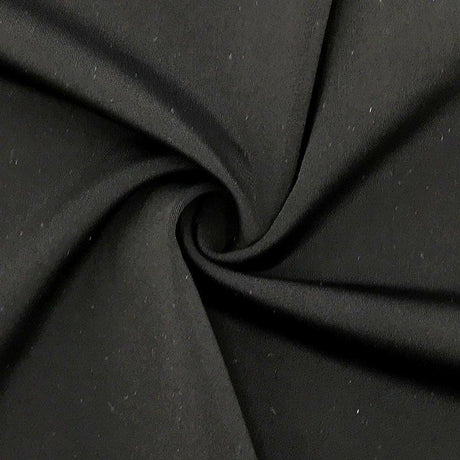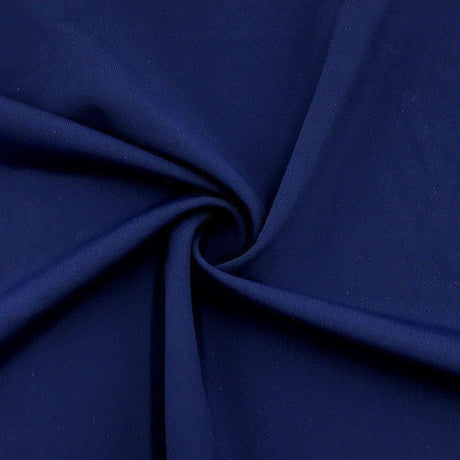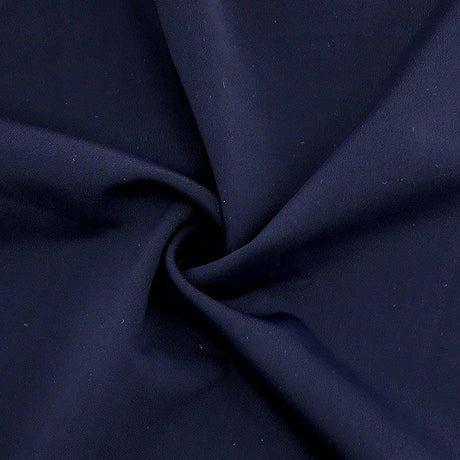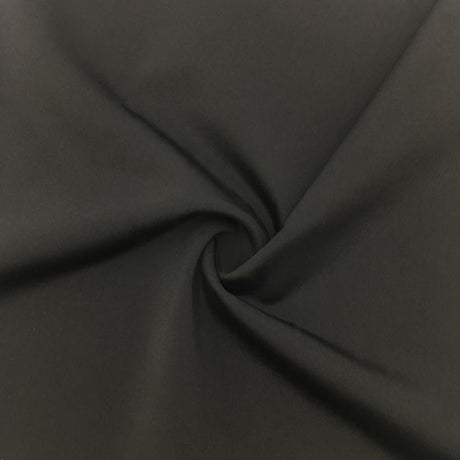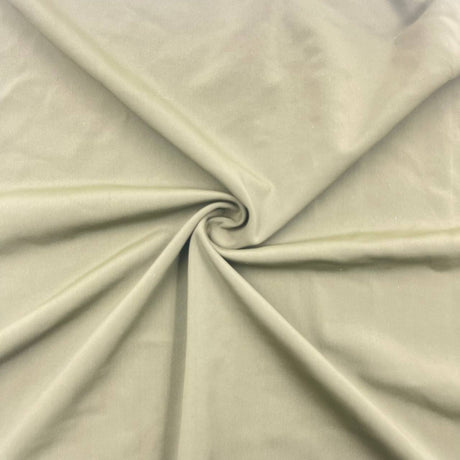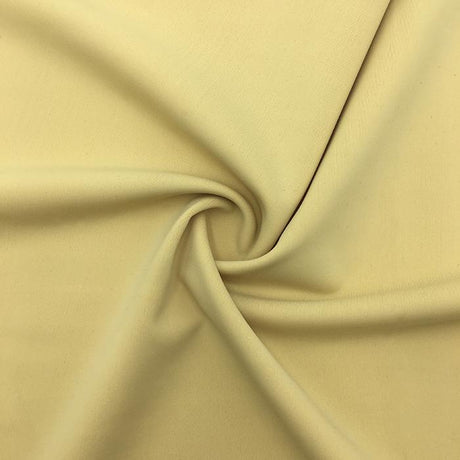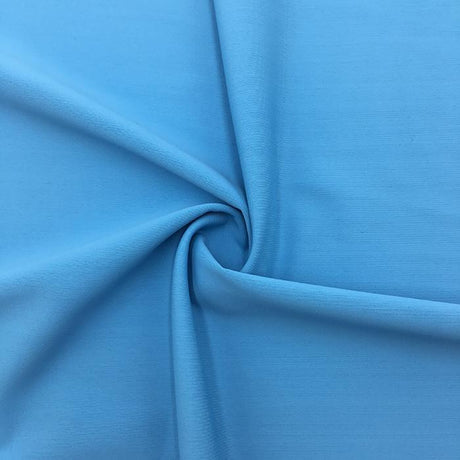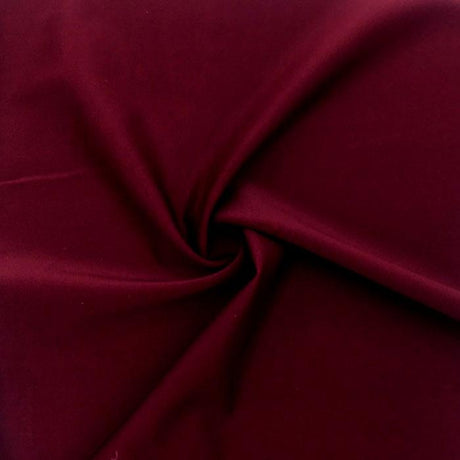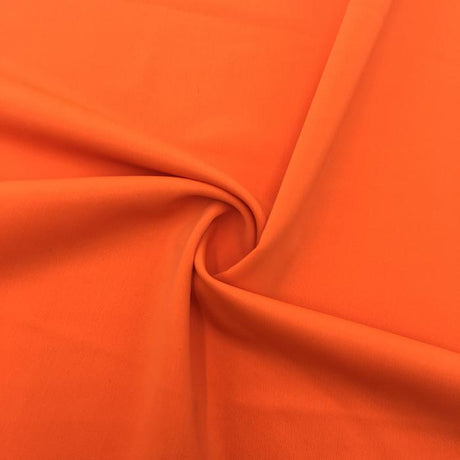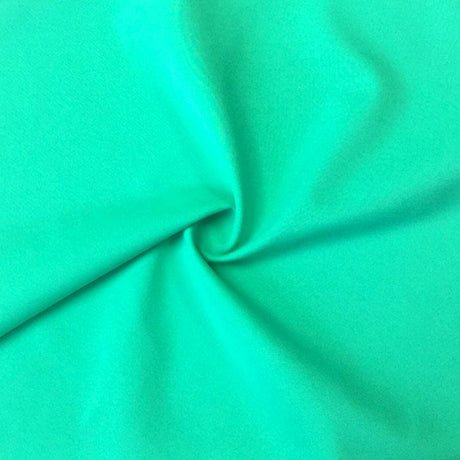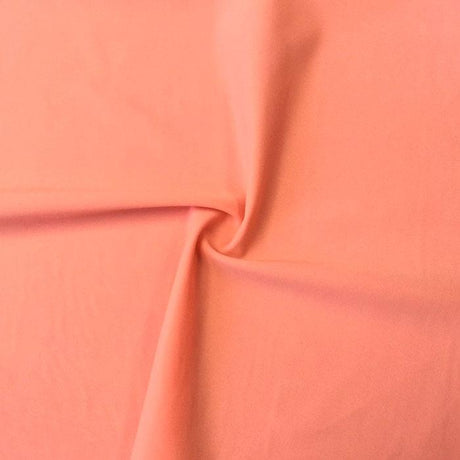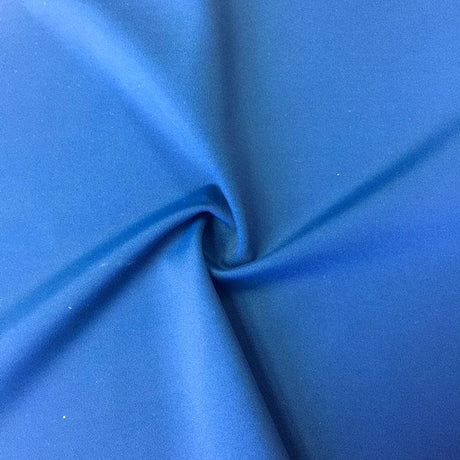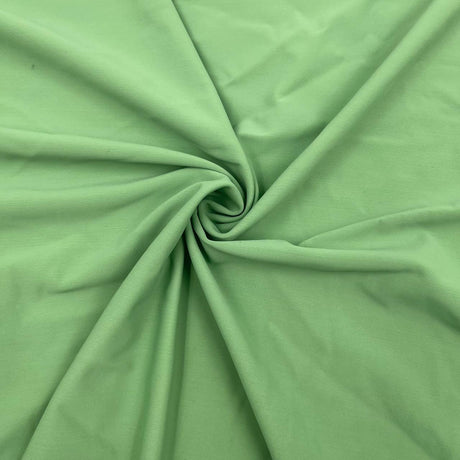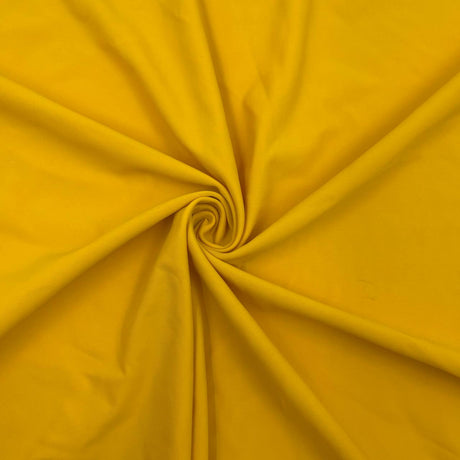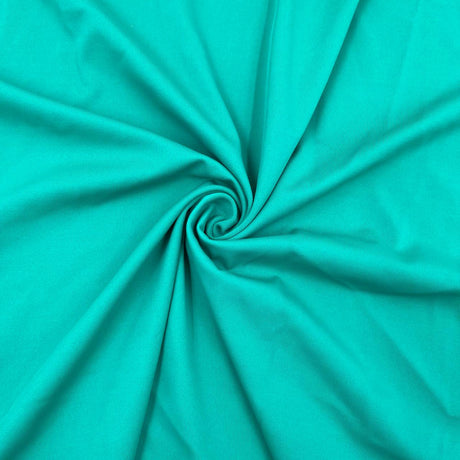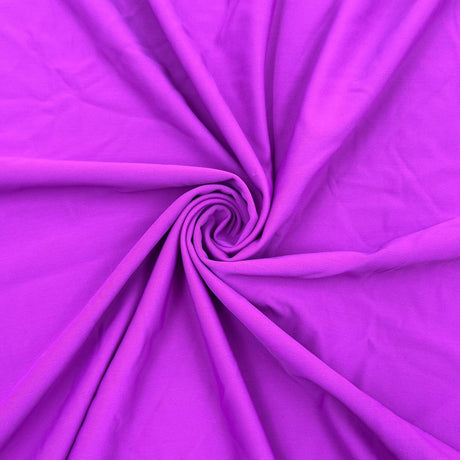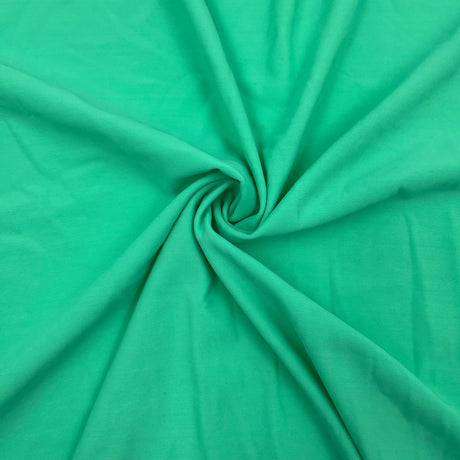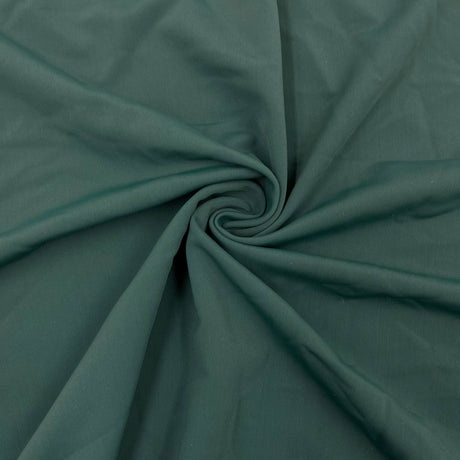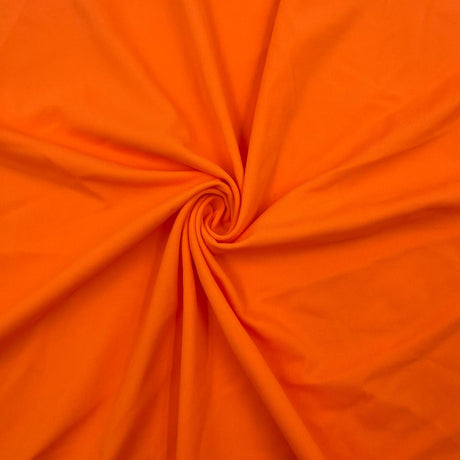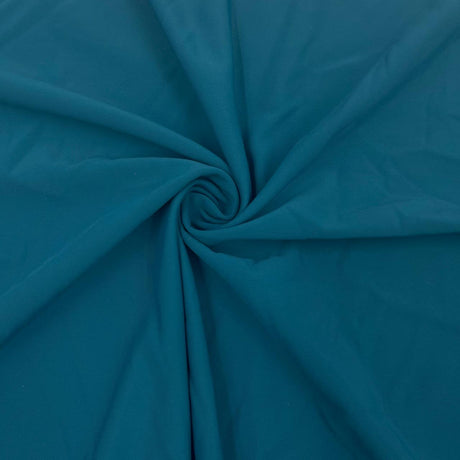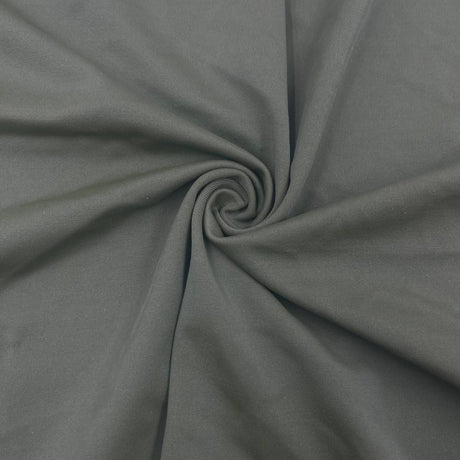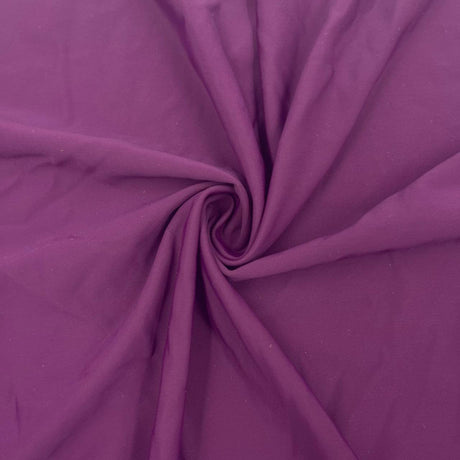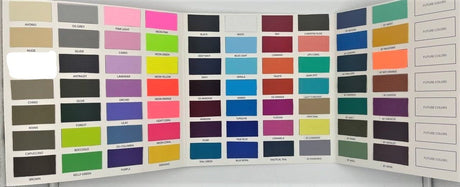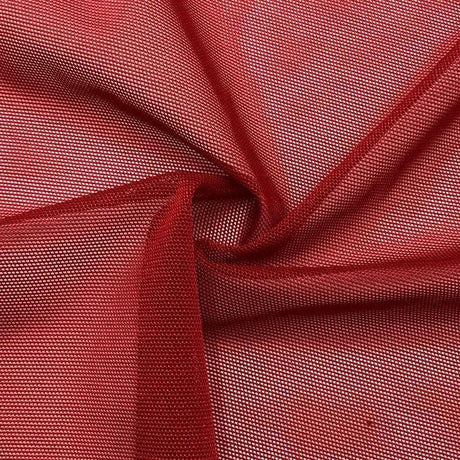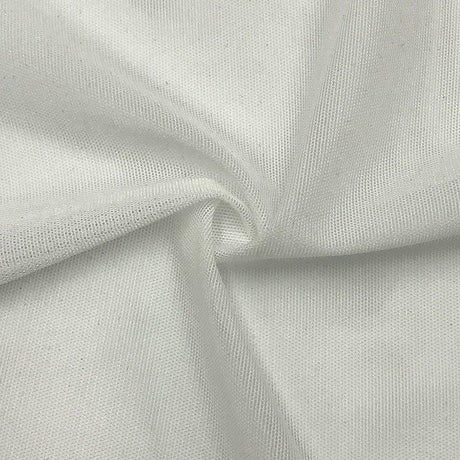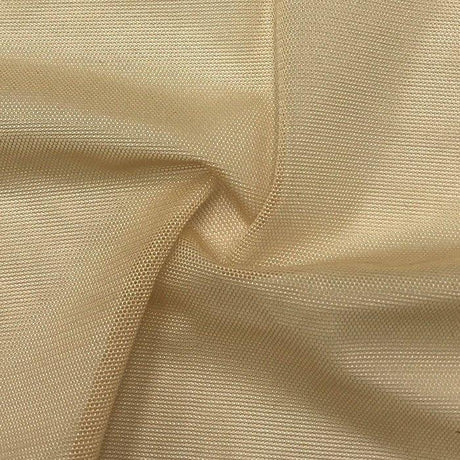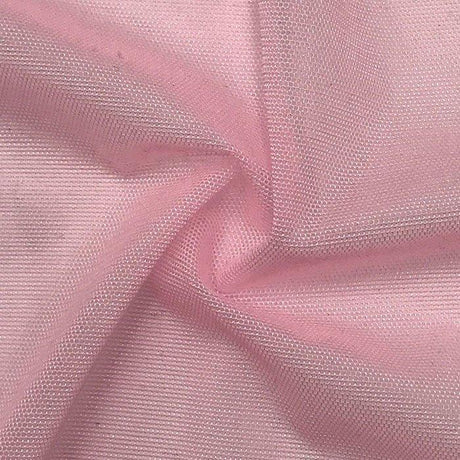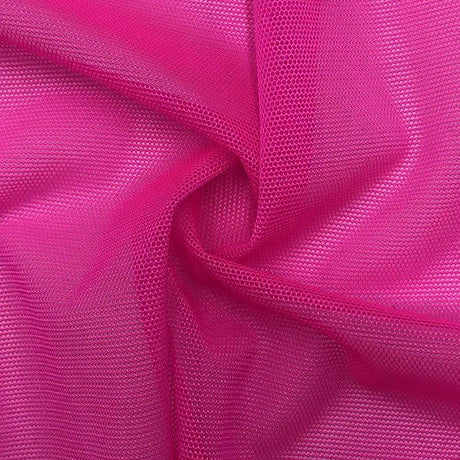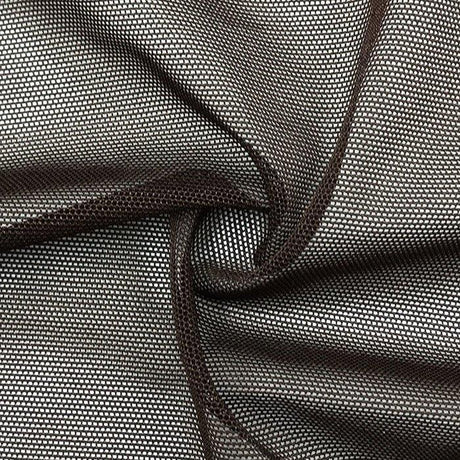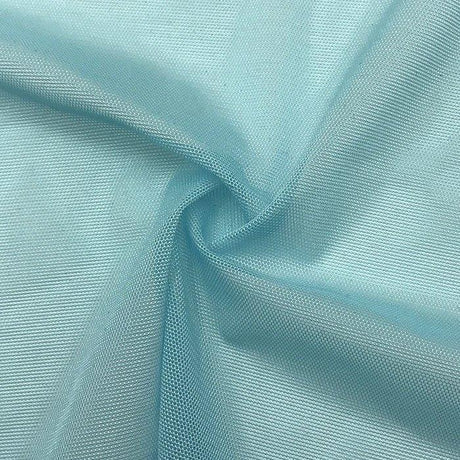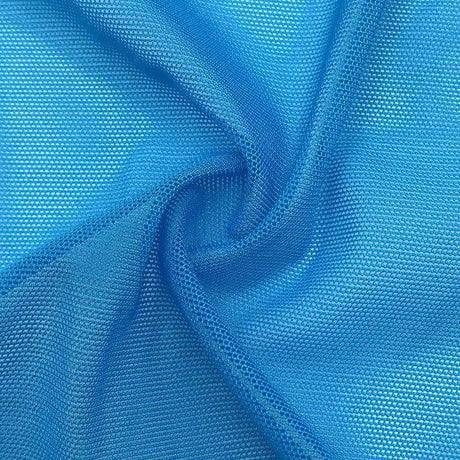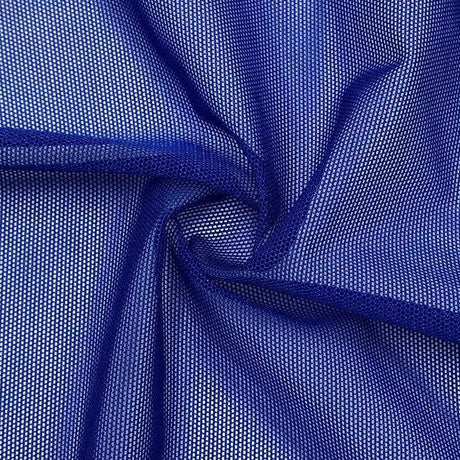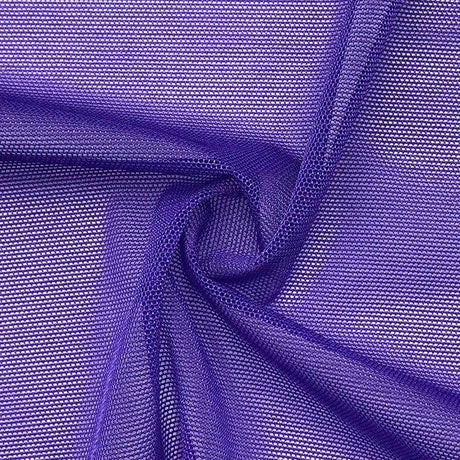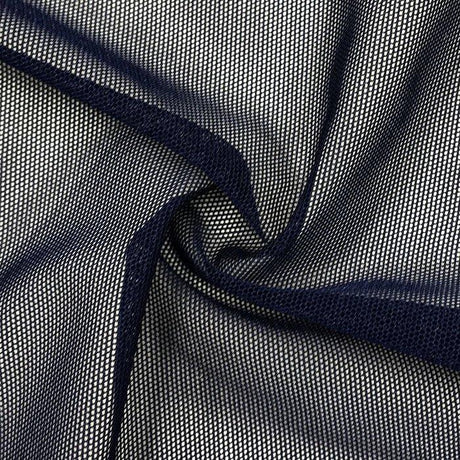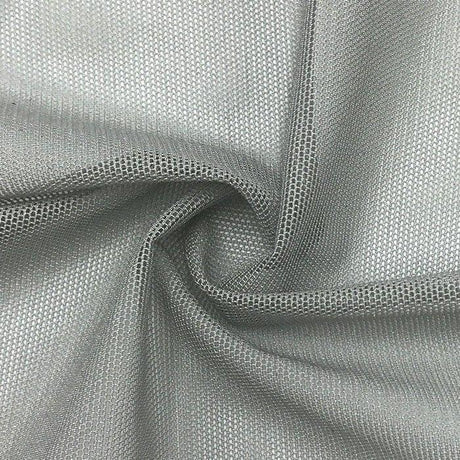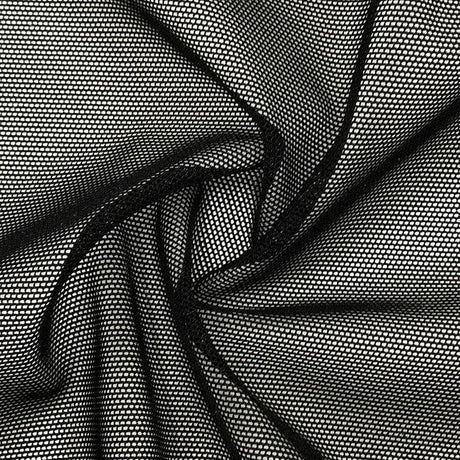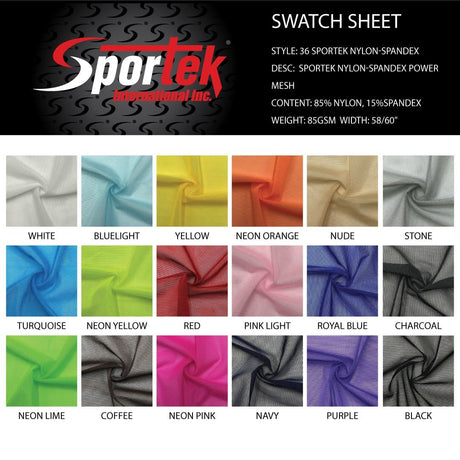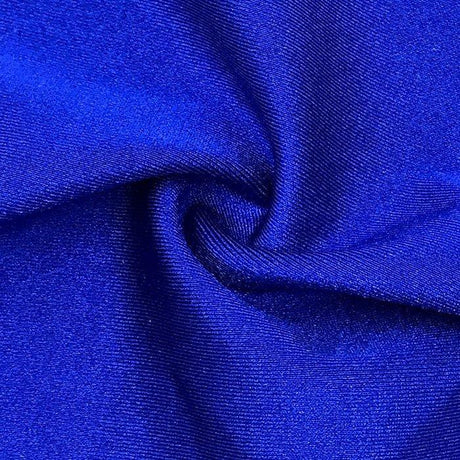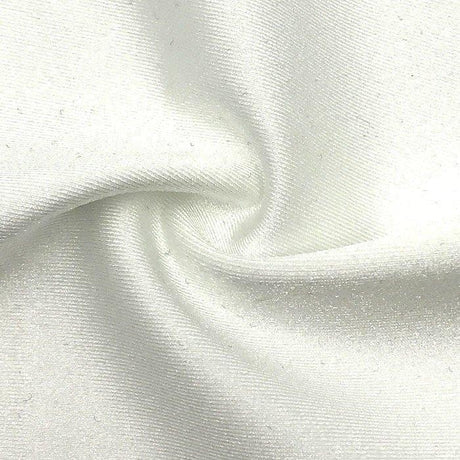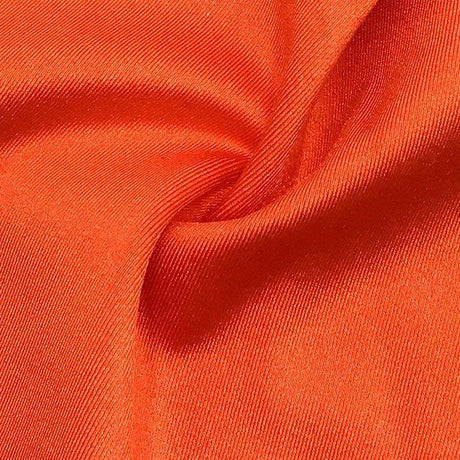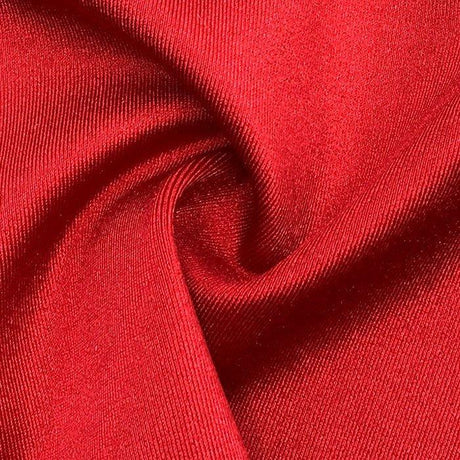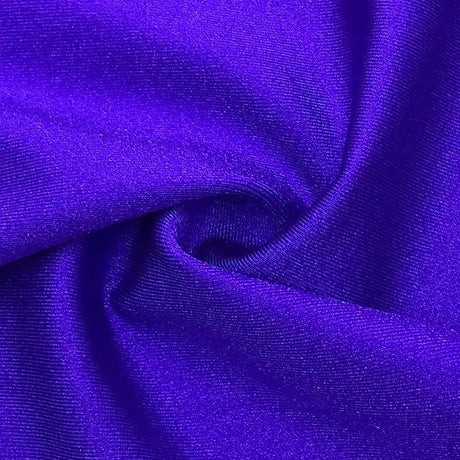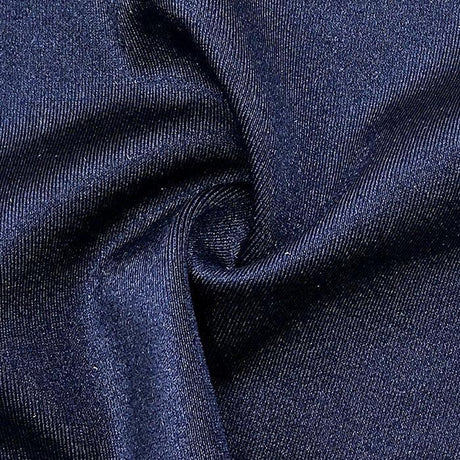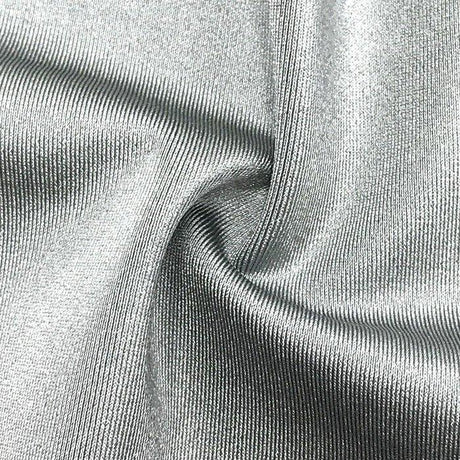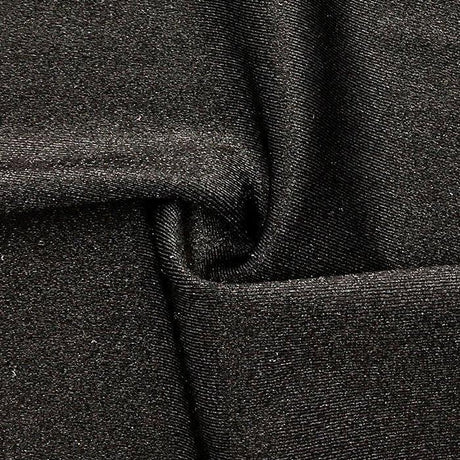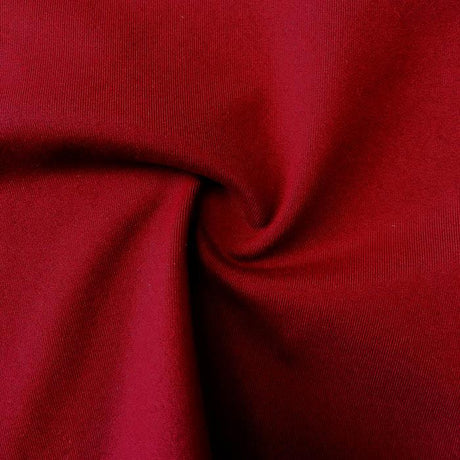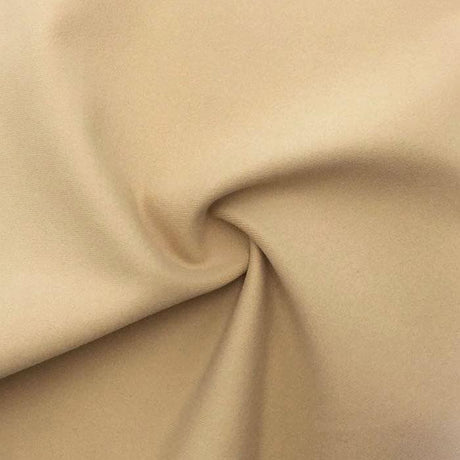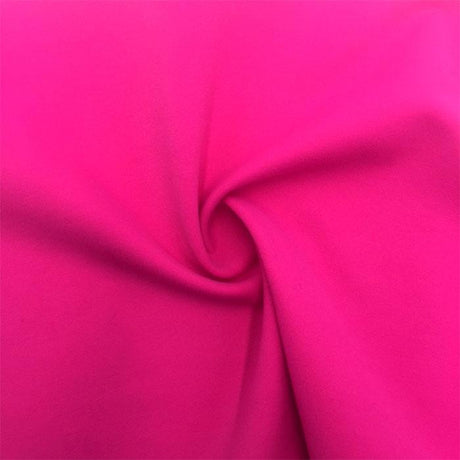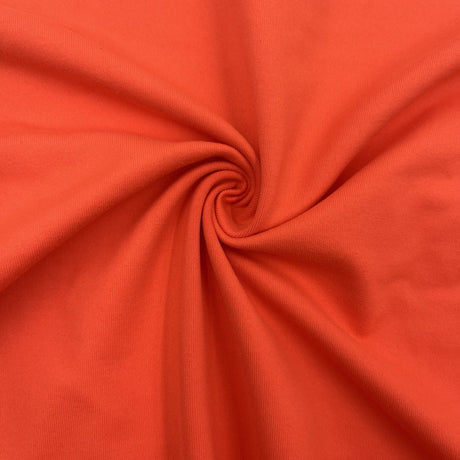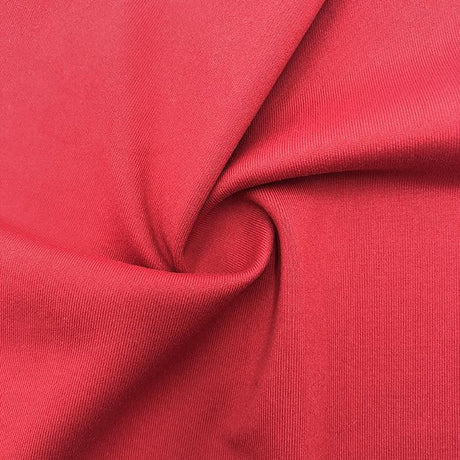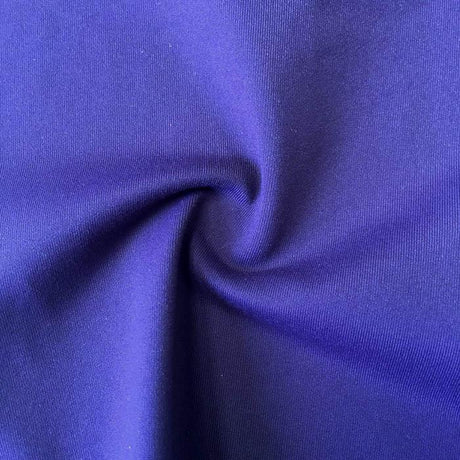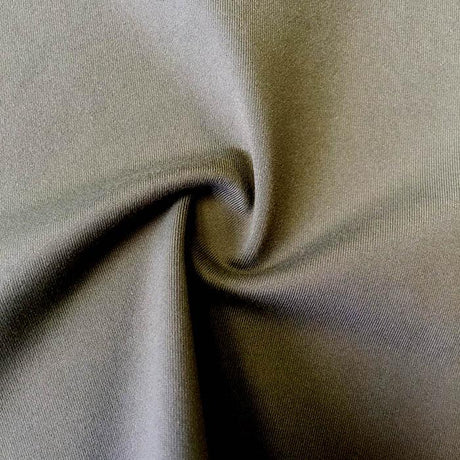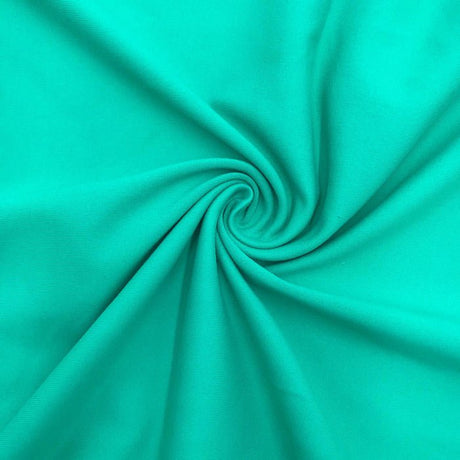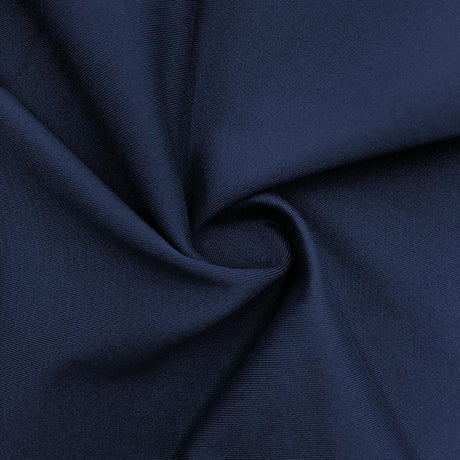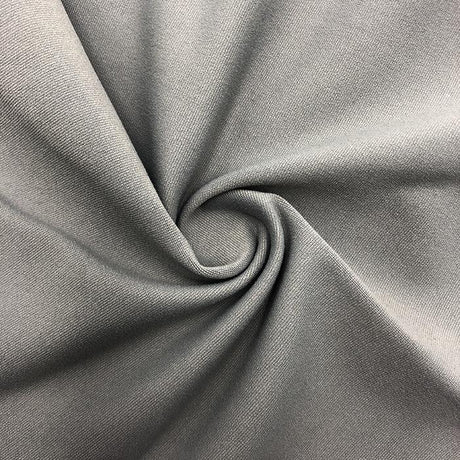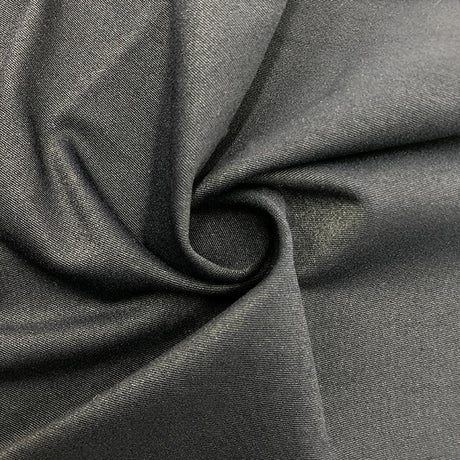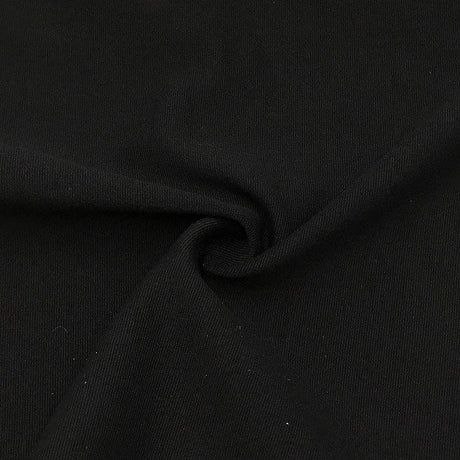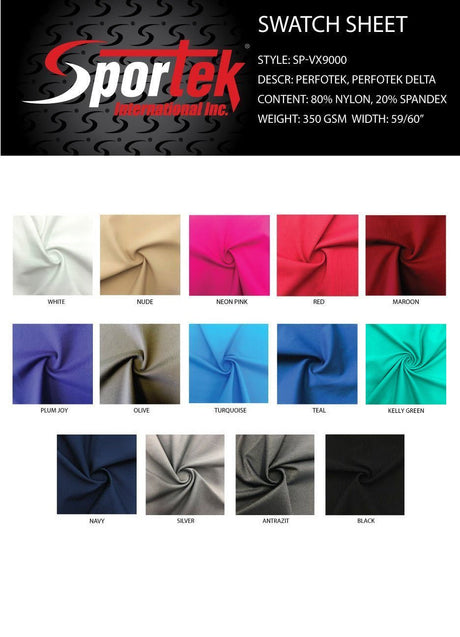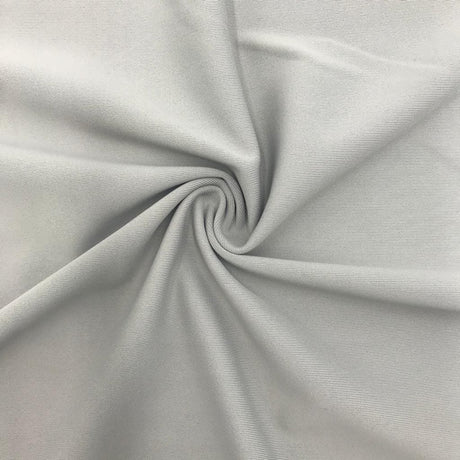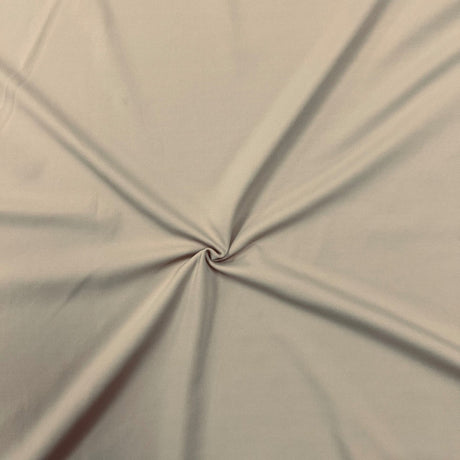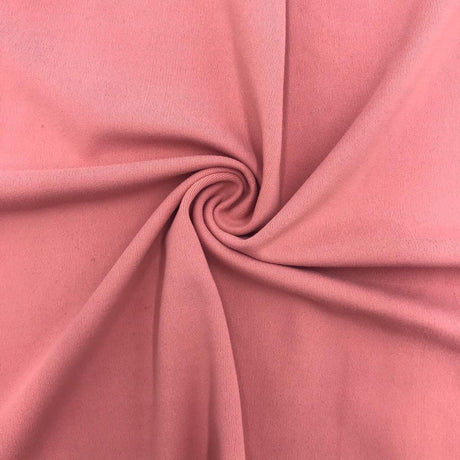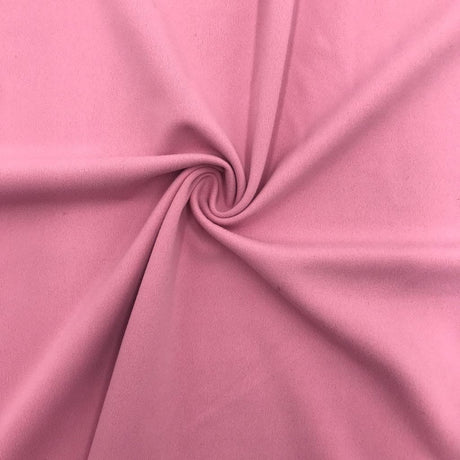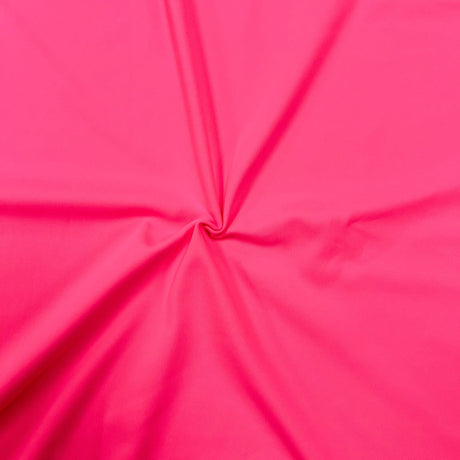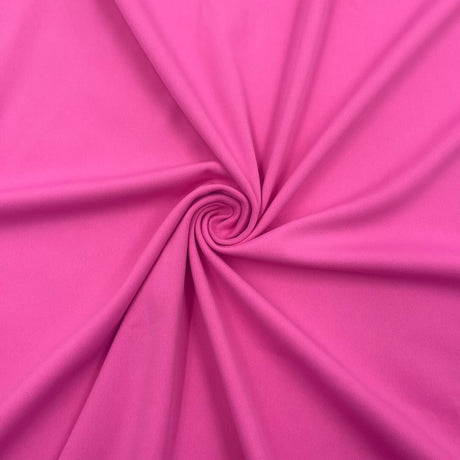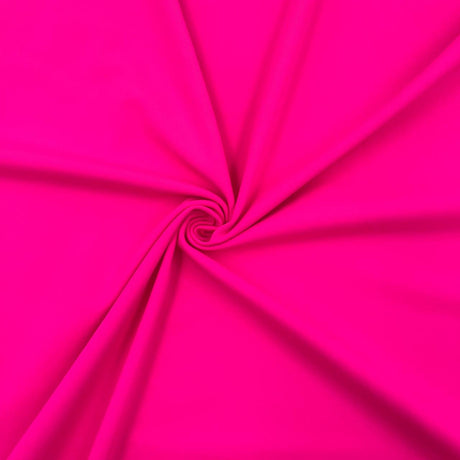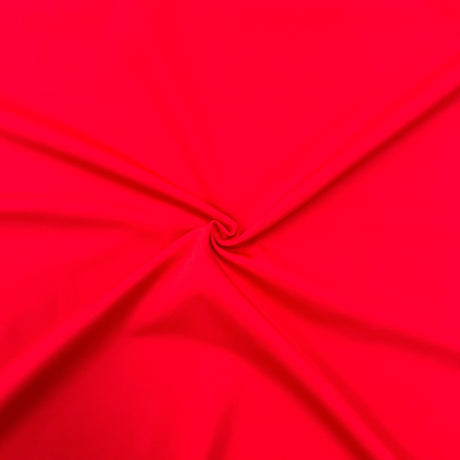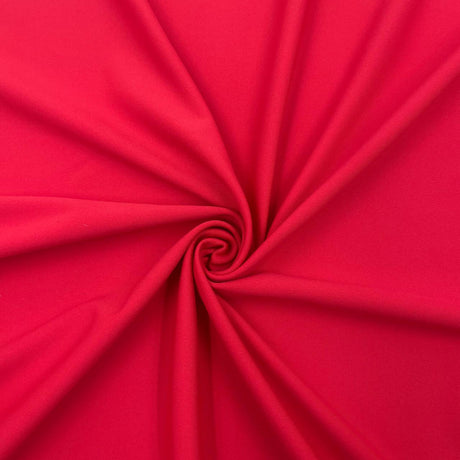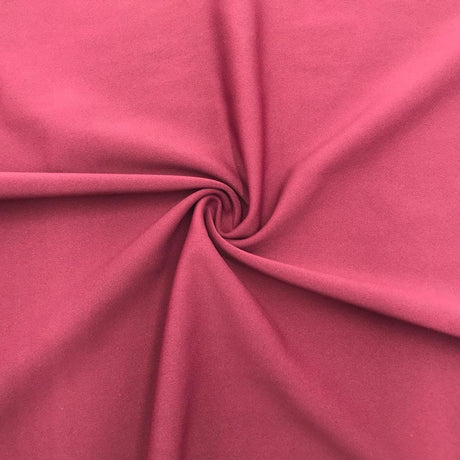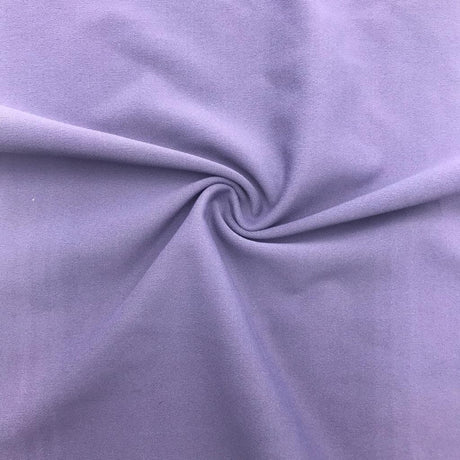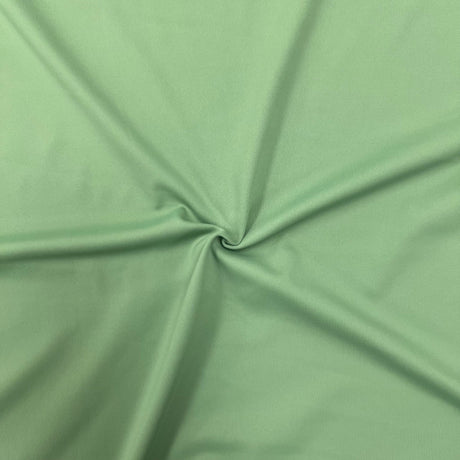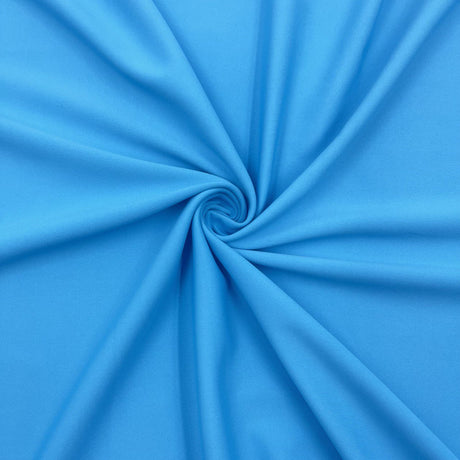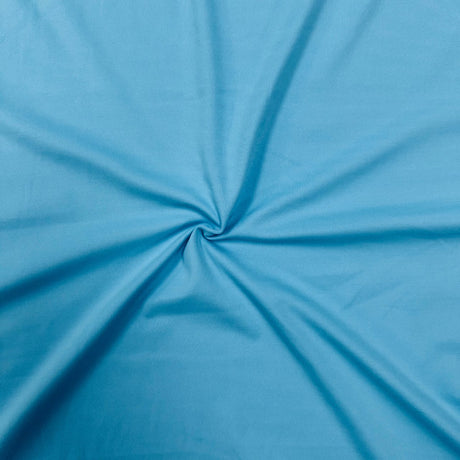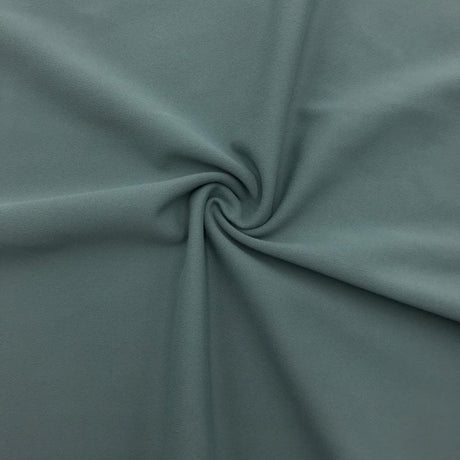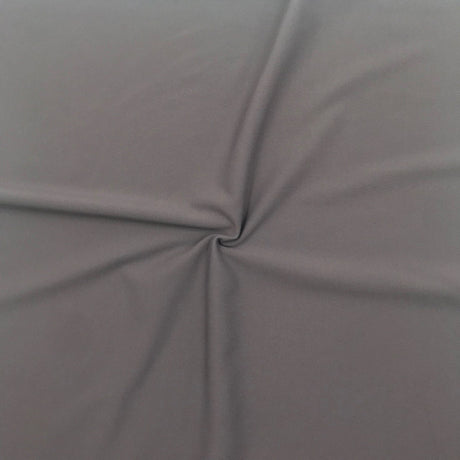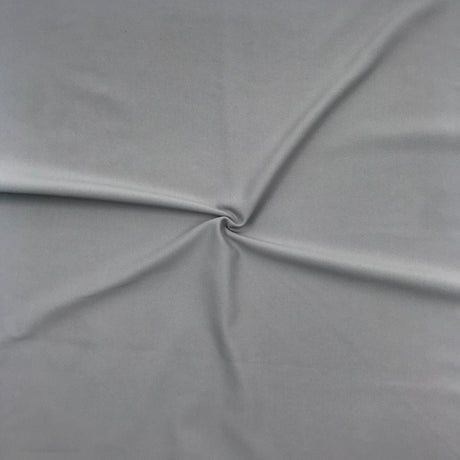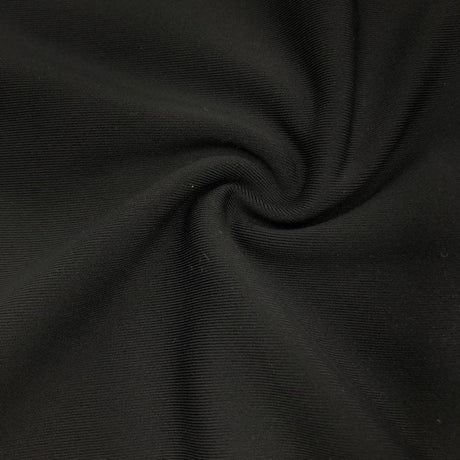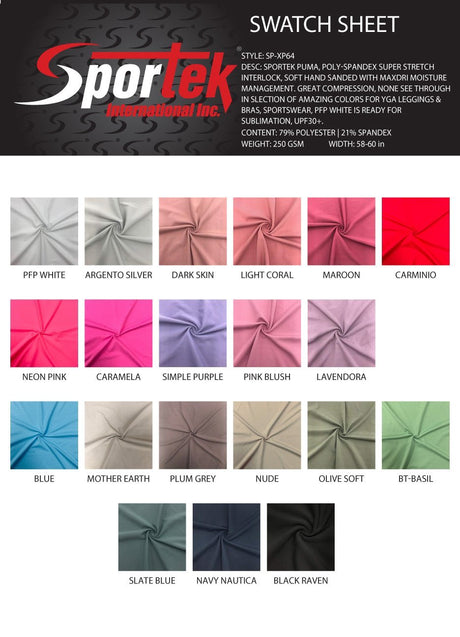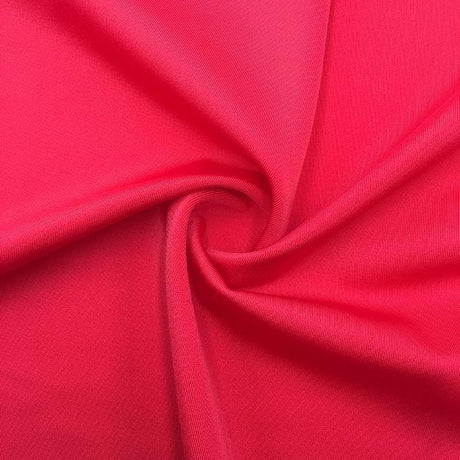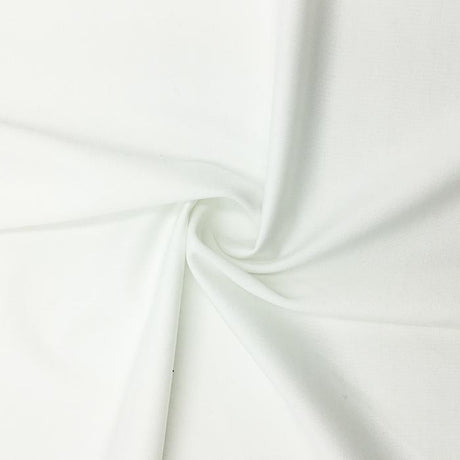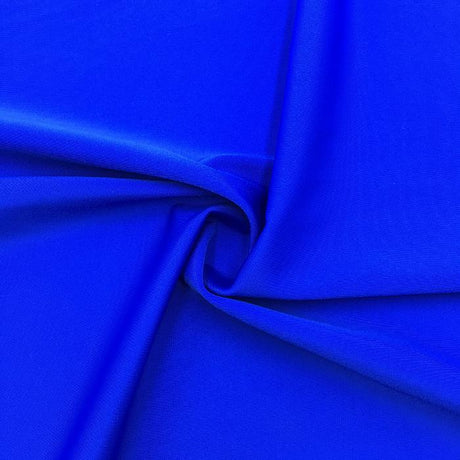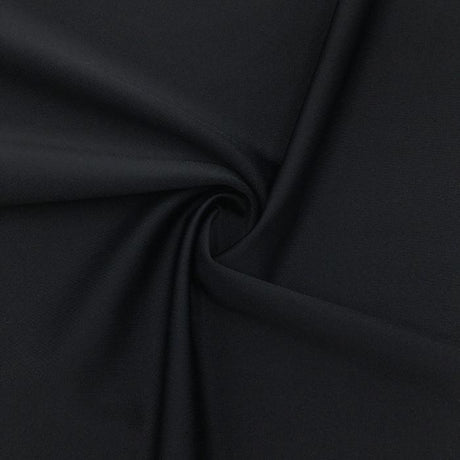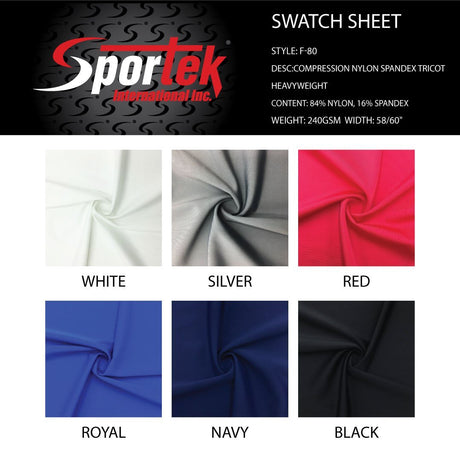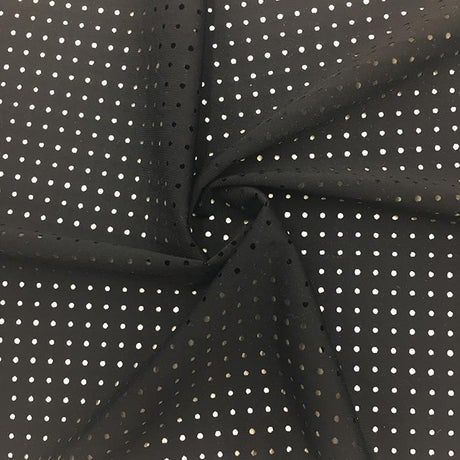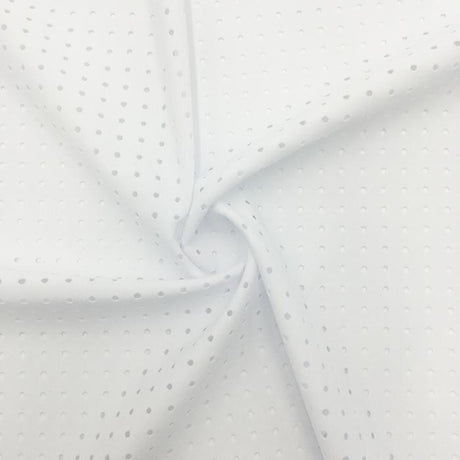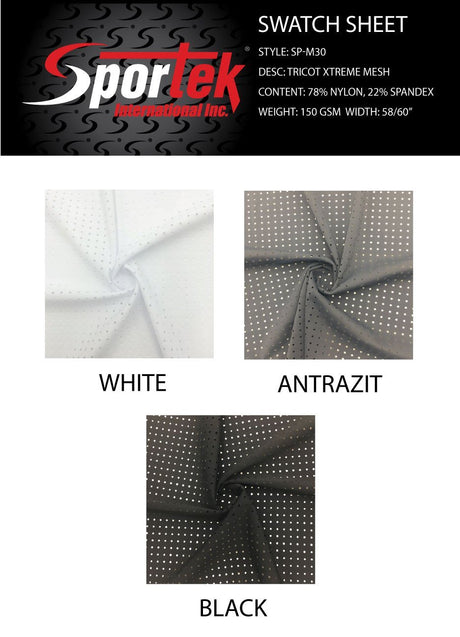Compression fabric refers to a class of high-elasticity textiles designed to apply purposeful pressure to the body. Unlike ordinary stretch fabrics that simply expand for comfort, compression fabrics exert defined support and pressure on muscle groups and circulation. In this article, we explore what compression fabrics are, how they work (in terms of elasticity, pressure zones, and recovery), the materials and constructions used, and their applications—from sportswear and shapewear to medical garments and swimwear.
We also delve into technical performance factors (elasticity, modulus, stretch power, breathability, etc.) and offer practical advice on selecting the right compression fabric. The goal is a comprehensive understanding of compression fabric support and performance, in a professional yet accessible way.
What Are Compression Fabrics?
Compression fabrics are elastic textiles engineered to provide pressure and support. They are typically made with a significant percentage of elastane (Spandex) fibers blended with a strong base fiber like nylon or polyester. This construction gives them the ability to stretch and then “compress” or squeeze the underlying body part with a consistent pressure.
By wrapping tightly around the body, a compression fabric garment applies external pressure that enhances blood flow and stabilizes tissues. This controlled pressure can improve circulation, reduce swelling, and support muscles during and after activity.
A defining feature of compression fabrics is their high elasticity coupled with powerful recovery. In practical terms, they can stretch significantly (often 70-100% beyond resting length) and then snap back to their original shape.
Quality compression textiles have both high stretch and excellent recovery; this combination ensures the garment can move with the body but still return to a tight fit and exert pressure. Elastic recovery is in fact one of the most important performance indicators for a compression material – without good recovery, a fabric that stretches will simply bag out and lose its compressive effect. High elastic “memory” allows the fabric to repeatedly elongate and rebound, which keeps the compression consistent over time.
Pressure zones and grading are another key aspect. Compression garments often incorporate different pressure levels in different areas of the body (for example, graduated pressure that is tighter at the extremities and slightly looser toward the core). This is commonly seen in medical compression socks or sleeves, where the knit is engineered to be firmest at the ankle or wrist and gradually less constrictive upward, pushing fluid back toward the heart. In fabrics, this can be achieved by varying the knit tension or elastane content in different zones.
By designing these pressure gradients, compression wear can assist circulation and lymphatic drainage in a targeted way. Overall, a compression fabric’s ability to apply specific pressure levels distinguishes it from regular stretch fabric. In fact, compression levels are often measured in millimeters of mercury (mmHg) for medical-grade garments – ranging from light 8–15 mmHg in mild support sleeves up to 40–50 mmHg in firm medical stockings. Athletic compression clothing typically falls in the moderate range (e.g. ~15–30 mmHg), enough to stimulate circulation and muscle stability without being as restrictive as clinical compression.
In summary, compression fabrics function by combining high elasticity with strong tension. They conform tightly to the body (thanks to elastane) and exert calculated pressure (thanks to fabric engineering and higher modulus). This pressure supports muscles, increases blood flow, and reduces vibration during activity, and can aid in faster recovery and reduced soreness post-exercise. Equally important, compression textiles maintain this support over time by quickly recovering to shape once stretch is released. Through careful fiber selection and knit design, they create a snug “second skin” that delivers therapeutic pressure without sacrificing flexibility or comfort.
Fiber Types and Composition
The performance of a compression fabric heavily depends on its fiber composition. Most compression textiles are blends of an elastic fiber (elastane) with a stronger, durable fiber like nylon or polyester. The proportions and types of these fibers affect stretch, feel, moisture management, and durability:
• Nylon (Polyamide) + Spandex: Nylon-spandex blends are very common in high-performance compression wear. Nylon is generally soft, smooth, and highly durable, with good abrasion resistance. It also wicks moisture reasonably well. When combined with spandex (usually 10–30% elastane by weight), the result is a fabric that is supple to the touch yet strong in stretch.
Nylon’s strength allows the fabric to snap back reliably and hold up to intense use. Many premium compression leggings, sleeves, and swimwear fabrics use nylon for a supportive but soft feel against the skin. Nylon-spandex fabrics also tend to have a slightly matte sheen and can be very opaque, which is desirable for coverage in sports or shapewear.
• Polyester + Spandex: Polyester-spandex blends are also widely used, especially in athletic and economy compression garments. Polyester is lightweight, hydrophobic (fast-drying), and often more cost-effective. It is slightly less soft than nylon but is resistant to fading and pilling. A polyester-based compression fabric will typically feel a bit slicker and can have excellent moisture-wicking when engineered properly.
Polyester doesn’t absorb water like nylon, so these blends dry quickly (great for sweaty workouts). They also hold color well (useful for printed compression tights or team uniforms). On the downside, polyester may not be quite as strong as nylon and can retain odors if not treated. Still, with a good percentage of spandex for stretch, poly-spandex compression fabrics offer a firm, resilient stretch and often a lower cost. Many moderate-compression sportswear items (like yoga tights or cycling shorts) feature polyester blends for their quick-dry comfort.
• Other Fibers: While nylon and polyester are the dominant base fibers, others occasionally appear. Cotton-spandex blends exist (e.g. in some comfort compression or post-surgical wear) but cotton’s high absorbency and lower recovery make it less ideal for sustained compression. Elastane is the crucial ingredient in any case – branded versions like Lycra® or Elastane provide the stretch.
Some advanced fabrics incorporate elastoester fibers or proprietary yarns to improve stretch or sustainability (for example, Celanese’s elastoester for “power-stretch” materials). Additionally, high-tech blends might add inorganic fibers or finishes (like carbon-infused or ceramic-infused yarns) to enhance heat regulation or circulation, but the core principle remains a strong elastic fiber + supportive yarn matrix.
Spandex (Elastane) content is a critical factor. Compression fabrics typically have a much higher elastane percentage than regular stretch fabrics. For instance, a normal stretchy t-shirt might have 5% spandex, but compression leggings often contain 15–30% spandex. Some specialized power fabrics even go up to 40% elastane in certain panels to achieve extreme support. Higher elastane gives greater stretch and “power” – meaning the fabric can elongate a lot but also pull back with more force (higher modulus).
However, more elastane can also make the fabric heavier and potentially trap more heat (since spandex is not very breathable on its own). Thus, there is a balance: designers choose a spandex content that provides the needed compression level while still allowing comfort. As a rule of thumb, light compression fabrics (for mild support) might use ~10–15% elastane, firm compression fabrics for sports or medical use often use 20% or more elastane, and shapewear powernets can reach 30%+ for maximum hold (often sandwiched between layers for comfort).
Different compositions also affect hand feel and performance. Nylon-spandex usually yields a soft yet firm stretch with a slightly cooler touch, whereas poly-spandex might feel slicker and be a bit warmer (poly can insulate more). Nylon’s superior strength can mean better longevity – it tolerates repeated stretching well, which is why many high-end compression brands favor nylon blends for durability and consistent compression over time. Polyester blends, meanwhile, shine in moisture-wicking and UV resistance (useful for outdoor sports compression gear).
Designers will choose the blend based on priorities: e.g. a compression swimwear fabric might be nylon-based for a smooth fit and strength in chlorine, whereas a budget compression sleeve for casual use might be poly-based to keep cost down. In all cases, elastane quality matters too – higher-grade spandex (like Lycra®) can improve stretch longevity so the garment doesn’t lose its squeeze after a few uses.
Knitting Techniques & Fabric Construction
It’s not just the fiber content that defines a compression fabric – the knit structure and weight of the fabric play huge roles in how much compression and comfort it provides. Key knitting techniques for compression textiles include circular knits, warp knits, and powernet meshes, each with distinct characteristics. Additionally, the fabric’s weight or density (often expressed in GSM – grams per square meter) influences its strength and feel.
• Circular Knit (Weft Knit): Many compression fabrics are made on circular knitting machines, which produce a seamless tube of knit fabric (common in socks, sleeves, or seamless athletic wear). Circular knits (such as single jersey or interlock structures) tend to be very stretchy in all directions (four-way stretch) and have a soft, smooth surface. This makes them quite comfortable and form-fitting.
In compression applications, circular knit fabrics are often used for graduated compression socks, tights, and athletic compression tops. The seamless nature is a plus for comfort (no pressure points from seams). These fabrics achieve compression by tight knitting with inlaid elastane yarns: the knitting machine can control yarn tension at various points to create shaped compression zones without seams. Circular-knit compression fabrics usually have a lighter, thinner profile compared to heavy powernets; they prioritize flexibility and smooth, even pressure.
For example, many sports compression leggings use a circular-knit stretch jersey that hugs the body uniformly. Medical compression stockings can also be circular knit – yielding a thinner, aesthetic garment for daily wear. One thing to note: circular knits, especially in seamless garments, tend to be limited in how high a compression they can provide (extremely high pressures usually require thicker, sturdier knits or multiple layers). But they excel in comfort and mobility, making them ideal for activewear and moderate compression needs.
• Warp Knit (Tricot and Power Mesh): Warp knitting is a technique (often using tricot or Raschel machines) that produces a very stable, tightly constructed fabric. Warp-knit compression fabrics are renowned for their “power” and structural support. A common example is the powernet or power mesh – a net-like warp knit with high elastane content that is used in shapewear and medical braces. Warp knits can achieve high stitch density and firm modulus, meaning the fabric resists stretch more and thus delivers stronger compression on the body.
For instance, advanced warp-knitted stretch fabrics in fine gauges (E.g. gauge E50 tricot) can create a smooth, body-sculpting material where the knit structure itself provides significant compressive force. These fabrics often look almost like a woven (very little give until pulled firmly) but actually have the needed elasticity due to integrated spandex. Powernet is a specific warp-knit mesh characterized by small openings and a heavy elastane yarn – it’s used as an inner layer in girdles, waist trainers, and high-compression shapewear to “contain” and shape the body. A typical powernet compression fabric might be around 150–200 GSM with 20–30% elastane, giving it a firm, strong stretch. For example, a nude powernet mesh of 170 GSM made of ~84% nylon and 16% spandex is marketed for high compression shapewear; it lifts and sculpts the body and “will recover even after long periods of wear” due to its robust elastic structure.
Warp knits are also used in athletic compression where extra support is needed – some high-end compression shorts or knee sleeves use warp-knit panels for stability. The trade-off is that warp knit fabrics are usually less supple than circular knits; they have a firmer feel and sometimes require seams (if not knitted in the round). But when maximum support is the goal, warp knits are preferred.
• Power Mesh / Powernet: As a subset of warp knits, it’s worth highlighting power mesh (a.k.a powernet) specifically. Power mesh is a breathable net-like fabric with powerful stretch resistance. It often has engineered holes or a grid (hence “mesh”), which allows some airflow while still providing compression.
Power mesh fabrics are ubiquitous in shapewear and medical compression wraps. They can be layered to increase strength or used strategically (for example, a sports bra might use powernet lining in the band for extra compression). Despite being mesh, they can be quite heavyweight and firm. The level of compression can be tuned by weight: e.g. lighter power mesh ~100 GSM for moderate compression versus heavy powernet 200+ GSM for firm compression. In shapewear, manufacturers classify compression levels that roughly correlate with fabric weight and elastane: medium compression (~20–30 mmHg) fabrics balance shaping with comfort, whereas firm compression (~30–40 mmHg) powernets are thicker and provide dramatic shaping for post-surgical or sculpting garments.
The containment and “holding power” of a powernet come from its higher modulus and lower stretch – it takes more force to stretch it, which means it squeezes back harder. For example, a powernet of 210 GSM might be 82% nylon/18% spandex, and an even heavier one of 240 GSM might be 72% nylon/28% spandex, indicating how adding spandex and weight increases the compressive force. These fabrics are a bit stiffer to the touch, but when worn, they deliver very firm support and don’t easily lose shape. Designers often hide power mesh layers inside garments for functionality (since on its own it can look industrial).
• Fabric GSM (Weight): The grammage or GSM of a compression fabric greatly affects compression level and comfort. In general, a higher GSM means a thicker, denser fabric which can exert more compression (and also is more opaque). Lighter fabrics (lower GSM) tend to have lighter compression.
For instance, a lightweight compression fabric (under ~150 g/m²) might be used for sheer compression stockings or low-impact activewear, where some stretch support is needed but breathability and thinness are priorities. Midweight fabrics (~150–200 g/m²) are common in leggings, sports compression tops, and everyday shapewear – they strike a balance between strength and comfort.
Heavyweight compression fabrics (200+ g/m²) are deployed for swimwear, high-compression shapewear, or support braces where extra power is needed. As an example, a heavy compression tricot fabric of 225 g/m² (80% polyamide, 20% Lycra) is explicitly noted to provide “additional support,” reducing muscle vibration and offering a very strong hold. The downside of higher GSM is often reduced breathability and sometimes bulk. Thicker fabrics run warmer and can be less flexible, so the user might feel more restricted. Thus, fabric engineers are constantly trying to develop lightweight compression fabrics that still have high power.
A notable innovation is Eurojersey’s Sensitive® Sculpt Light fabric, which achieves high compression power with an ultra-thin, light knit by using 41% Lycra content and a compact knitting structure. It “provides an exceptionally strong hold with the lightest feel,” showing that intelligent knit design can overcome some weight drawbacks. In summary, GSM is a useful indicator: heavier fabrics generally deliver firmer compression and more durability, whereas lighter ones favor comfort and flexibility. The right choice depends on the application’s needs (e.g., a post-surgery binder might opt for a heavy powernet for maximum compression, while running tights lean toward midweight knits for comfort).
Activewear and Sports Applications
One of the most popular domains of compression fabric use is activewear. Athletes and recreational fitness enthusiasts wear compression garments such as leggings, shorts, tops, sleeves, and socks to potentially enhance performance and recovery. In activewear, compression fabrics serve multiple purposes:
• Muscle Support and Stability: During exercise, tight compression leggings or arm sleeves support the underlying muscle groups by reducing oscillation (vibrations). This can decrease muscle fatigue and perceived exertion. For example, compression tights help “support the major muscle groups, allowing them to function more efficiently”, which can improve muscle alignment and power output. The fabric’s firm hug can also improve proprioception (body awareness), potentially leading to better form during activities.
• Improved Circulation and Recovery: A key selling point of compression sportswear is that it may increase blood flow to working muscles. The gentle pressure on the limbs helps blood return to the heart faster, delivering more oxygen and removing metabolites like lactic acid. Studies have found that wearing tight spandex compression gear can increase local blood flow by up to ~30-40% during activity and recovery.
This can translate to reduced post-exercise swelling and faster recovery from intense workouts. Athletes often use compression sleeves or leggings after training (so-called recovery wear) for this reason. While scientific evidence varies, anecdotal feedback and some research reviews conclude that compression garments can aid in reducing post-exercise muscle soreness (DOMS) and improving venous return.
• Comfort and Aesthetics: Modern compression activewear is also about comfort and fit. The snug, second-skin fit prevents chafing and muscle “bounce.” Many runners, for instance, prefer compression shorts as they feel securely held and get fewer muscle aches from constant jarring. Aesthetic appeal is a bonus: compression fabrics create a smooth, contoured look on the body, which many find flattering (e.g. no loose fabric flapping).
The psychological benefit of feeling supported shouldn’t be ignored—athletes often report that compression gear gives them confidence and better kinesthetic feedback.
Common activewear compression pieces include compression tights/leggings (for running, training, basketball, etc.), compression shorts, long-sleeve compression tops (often worn in football, weightlifting, or martial arts for muscle support and as a base layer), and calf or arm sleeves for targeted support.
These garments typically use medium-weight circular knit fabrics (nylon/spandex or poly/spandex) with moderate compression (for example, running compression leggings might be around 15–20 mmHg at the ankle). Brands may advertise specific pressure ratings or simply describe the level as “firm” or “graduated.” For instance, a commercial compression legging might be 75% nylon and 25% spandex, providing ~20–30 mmHg at the lower leg.
Another sports application is compression sleeves for joints (knees, elbows). These often use slightly sturdier knits or even warp-knit sections to provide support to the joint and surrounding muscles. They act like a mix of compression garment and soft brace, keeping swelling down and adding some stability. Similarly, compression socks are extremely popular among runners and travelers – usually knee-high socks that apply graduated compression (often 15–25 mmHg) to improve calf muscle circulation and prevent blood pooling in the legs.
It’s worth noting that not all sports compression wear is equal. Some “compression” leggings on the market are more about tight fit and style rather than true medical-grade compression. Buyers should look at fabric specs: a higher elastane percentage and a specified mmHg range indicate a functional compression garment. For example, a medical-grade sports compression tight might list 23% spandex and an 18 mmHg rating at the ankle, whereas a fashion “compression” tight might have only 10% spandex and no pressure info (indicating lighter compression). Serious athletes often opt for reputable compression-focused brands that provide this data.
In summary, compression fabrics in activewear aim to boost performance, reduce injury risk, and speed recovery. Whether or not they turn you into a superhero, they undeniably create a supported sensation. They are a staple in today’s sports apparel, from professional marathoners in compressive calf sleeves to weekend gym-goers in compression tights.
Shapewear and Contouring Garments
Beyond sports, compression fabrics play a huge role in the world of shapewear and fashion contouring. Shapewear garments (think slimming bodysuits, waist cinchers, compression shorts, etc.) utilize the strong, elastic hold of compression textiles to reshape and smooth the body’s silhouette.
In this application, the goal is to provide firm compression for cosmetic effect while maintaining comfort for daily wear.
Shapewear typically uses high-compression fabrics like powernet, power mesh, or heavyweight stretch knits. For example, a popular material for shapewear is a firm powernet – a nylon-spandex mesh that can significantly flatten the midsection or thighs. These fabrics often exert pressures in the range of 20–30+ mmHg, equivalent to medical firm support, to achieve visible shaping.
One reference point: faja-style Colombian shapewear often advertises “medium compression (20–30 mmHg) for balanced shaping, or firm compression (30–40 mmHg) for dramatic sculpting,” depending on the fabric weight used. This indicates how compression level correlates with shaping effect.
Key areas where shapewear applies compression fabric include:
• Tummy and Waist: High-waisted tummy shaper briefs or waist cinchers use compression fabrics to flatten the stomach and cinch the waist. A powernet panel in the front can compress the abdomen, reducing its apparent circumference. The fabric must be strong (high modulus) to pull in fatty tissue effectively. Waist trainer bands, for example, often have a double-layer of thick compression fabric for extra “squeeze.”
• Hips, Thighs, and Buttocks: Mid-thigh shaper shorts and leggings use compression to slim the thighs and hips. Interestingly, shapewear designers sometimes vary compression – for instance, a butt-lifting short might have extremely tight powernet on the thighs but a slightly less compressive (more elastic) panel around the butt to allow curvature. Compression fabric with different knit tensions can thus shape one area while releasing in another to enhance curves rather than flatten everything.
• Bust and Back: Compression fabrics are used in shaping camisoles or posture correctors to smooth back bulges and support the bust. A powernet-lined bra band, for instance, ensures no “back rolls” by evenly distributing pressure. In open-bust shapewear tops, strong compression fabric pulls in the upper torso while leaving the bust area free (to be supported by a bra).
One hallmark of compression fabric in shapewear is the concept of “stretch and recovery” for long hours. People may wear shapewear all day, so the fabric must not lose its shape. High-quality shapewear fabrics boast excellent recovery even after extended wear. This means the garment won’t start sagging or loosening halfway through the day.
Additionally, breathability and moisture management are considerations – nobody wants a sauna effect under their clothes. That’s why many shapewear compression fabrics are designed as meshes or include micro-perforations to vent heat. Some newer shapewear fabrics also incorporate finishes like antimicrobial treatments (to prevent odor) or even embedded minerals (e.g., bio-ceramic crystals claimed to improve micro-circulation).
Shapewear ranges from light smoothing (just a touch of compression, often a single-layer lightweight fabric) to extra-firm sculpting (multiple layers of powernet and rigid panels). The latter can border on medical-grade compression in intensity.
It’s important for designers to find the sweet spot where the garment provides the desired shaping but a user can still breathe and move. Often, shapewear will strategically combine fabrics – for example, a bodysuit might have a powernet tummy panel (strong compression) and a softer spandex knit on the side for flexibility. This use of varying compression zones is akin to pressure mapping on the body.
In summary, compression fabrics enable shapewear to do its job of contouring. The strong yet elastic textiles redistribute and compress flesh in a relatively comfortable way. Remember, it’s the same principle as medical compression, just applied for aesthetic outcomes. The best shapewear fabrics are those that firmly shape while staying comfortable, breathable, and invisible under clothing – a challenging set of requirements that advanced compression textiles continue to meet through innovation.
Medical and Post-Surgical Uses
Compression fabrics have a well-established role in medical garments and therapy, where they serve to improve circulation, reduce swelling, and support healing. Medical-grade compression garments are often prescribed for conditions like varicose veins, lymphedema, deep vein thrombosis (DVT) prevention, and post-surgical recovery. These garments include compression socks and stockings, arm sleeves for lymphedema, abdominal binders, compression wraps, and post-op compression wear (e.g. after liposuction or orthopedic surgery).
In medical applications, the requirements for compression fabric are stringent: they must deliver specific, graduated pressure profiles, be safe for long-term wear on skin, and be highly durable through frequent use and washing. Key features of medical compression fabrics:
• Graduated Compression: Most medical compression garments are engineered with a gradient pressure (higher at the extremities, lower toward the body). This gradient pushes blood or lymph fluid in the desired direction (for example, up the leg). As mentioned earlier, this is achieved by knitting the fabric tighter in certain areas. For instance, a compression stocking may be knit with a smaller circumference and/or tighter knit at the ankle (e.g. 30 mmHg there) and gradually larger loops up the calf (maybe 20 mmHg at the top).
The fabric’s elastic properties must be very consistent and well-calibrated to achieve this. Often, medical compression fabrics are tested with specialized equipment to ensure they exert the proper mmHg at each point. Fabrics for medical socks are usually strong circular knits or flat knits with high spandex and heat-set to hold the precise shape.
• High Modulus for Firm Support: Medical compression often requires a firmer compression (higher modulus) than athletic wear. Fabrics might feel quite stiff in hand. For severe cases (like stage II lymphedema), flat-knit compression garments with seams are used because they can be made using very stiff elastics that a circular knit machine couldn’t produce in a seamless tube.
The containment capacity (the ability to resist outward swelling) is crucial. Interestingly, one might assume thicker flat-knit fabrics always contain swelling better, but research shows that as long as a fabric has stretch (elasticity), its stiffness under tension can be similar to a thinner knit. What matters is the elastic force it can exert when stretched on the limb – so a well-designed thinner knit can match a thicker one if engineered properly. Still, many medical garments use relatively heavyweight, tightly-knit fabrics (often warp knits or robust weft knits) for reliability.
• Breathability and Skin-Friendliness: Patients may wear compression stockings all day, so breathable, hypoallergenic materials are preferred. Many medical compression fabrics are latex-free (to avoid allergies) and use soft fibers like nylon on the inside for a smooth feel. The knit structure might incorporate micro-spaces or a porous texture to allow airflow. Moisture-wicking is also crucial to prevent skin maceration.
Thus, a lot of medical compression wear uses cotton-blend or moisture-managing yarns in the interior, or a knit that creates channels for air. For example, a compression arm sleeve might have a cotton-spandex blend for softness, covered by a nylon-spandex overlay for strength.
• Durability: Medical compression garments are not cheap, and they often need to be worn daily. The fabrics are expected to last through many wear cycles and washes without losing compression. Quality compression textiles are engineered to maintain their elastic recovery over time – they often undergo tests of stretching and recovery (like stretching to 100% and checking that >90% of pressure is retained after X cycles).
Patients are usually advised to replace compression garments every 3–6 months, partly due to gradual fabric fatigue. High-quality materials (like double-covered elastane yarns, where spandex is wrapped with nylon) can prolong garment life by protecting the elastic. Also, some medical compression fabrics include antimicrobial treatments (to prevent odor/infection) and are designed to be washed at higher temperatures for hygiene, all without degrading the elastic fibers.
Specific medical uses include: - Post-Surgery Compression Garments: After procedures like liposuction, tummy tucks, or breast surgery, patients wear compression garments (abdomen binders, compression bras, sleeves) to control swelling, improve circulation, and help the skin retract. These garments often use powernet-type fabrics for strong, uniform pressure (e.g. ~20–30 mmHg). A post-liposuction bodysuit might be a heavyweight nylon-spandex compression fabric that applies ~17–20 mmHg consistently to the torso. The compression helps prevent fluid buildup (edema) and supports tissues as they heal.
Design-wise, post-op compression garments favor flat seams or seamless areas to avoid indentations on fragile skin.
• Orthopedic Supports and Braces: Many knee braces, ankle supports, and back braces incorporate compression fabric panels. For example, an elastic knee sleeve for mild knee support is essentially a tube of sturdy compression knit that provides maybe 15–20 mmHg around the joint. It’s flexible enough to move but offers compression to reduce inflammation.
Back support belts often have power-stretch elastic fabric that can be cinched to apply compression to the lower back and abdominal region (sometimes combined with more rigid stays). These fabrics need to be exceptionally strong (to provide significant support when tightened) yet breathable for comfort. Often a thick elastic warp-knit band is used, with perhaps <50% stretch range so it’s quite taut when pulled.
• Chronic Conditions (Lymphedema, Varicose Veins): Patients with lymphedema (swelling due to lymphatic fluid) rely on compression garments to manage fluid buildup. Custom flat-knit arm sleeves or leg stockings are made with compression fabrics tailored to their limb measurements.
Lymphedema sleeves might use a slightly textured flat knit that massages the skin. Varicose vein sufferers use compression stockings (typically 20–30 mmHg) to assist vein blood flow. These are usually smooth circular-knit fabrics that look like thick hosiery. The fabric must deliver graduated compression and also look somewhat acceptable for daily wear (nude or black colors, etc., often in a nylon-spandex opaque knit).
In all such uses, compression fabric literally serves as a medical device in textile form. The precision and quality of these fabrics can directly impact health outcomes (e.g., preventing a blood clot in a post-op patient by maintaining proper compression on the legs). That’s why medical compression fabrics are often developed in partnership with medical experts and rigorously tested. The technology of these textiles overlaps with sports and shapewear, but with an added emphasis on consistent, safe pressure and patient compliance. If a compression fabric is too uncomfortable, patients won’t wear it; hence, achieving the therapeutic effect in a tolerable garment is the ultimate goal.
Swimwear and Athletic Swim Uses
Compression fabrics have also made a splash in the swimwear world, especially in competitive swimming and surf sports. Competitive swimsuits (like those used in racing by professional swimmers) are often made from high-compression fabrics that compress the swimmer’s body into a streamlined shape and support muscles during racing. Additionally, some fashion swimwear uses compression lining to provide a shaping effect (much like shapewear but in a swimsuit).
Key points about compression fabrics in swimwear:
• Hydrodynamic Compression: Elite competition swimsuits (e.g. by Arena, Speedo, TYR) are designed with very high elastane content fabrics that squeeze the swimmer’s body firmly. The idea is to reduce drag by smoothing the body profile (no loose skin or muscle vibrations) and to support muscles to delay fatigue. For instance, Arena’s carbon series suits use panels of a fabric called Sensitive® Sculpt (by Eurojersey) in the legs and torso. Sensitive Sculpt is a powerful warp-knit textile that “comfortably supports and compresses muscles while being super lightweight”.
One Arena men’s compression swim tight lists the upper leg portion as 59% polyamide and 41% elastane – an extremely high spandex ratio – to achieve that compression. These suits can have compressive pressures similar to medical garments; athletes often joke they are hard to put on due to the tightness. By compressing the core and thighs, the suits help maintain body alignment in water and reduce muscle oscillation, potentially improving performance by a small margin (which matters in competitive swimming). The fabrics used are usually very fine-gauge warp knits with water-repellent coatings, so they don’t soak up water and stay lightweight. They also often integrate strong but flat seams or bonding to hold the shape and keep compression consistent.
• Muscle Support in Water: Apart from reducing drag, the compression in swimwear can support muscles during explosive movements (like dive starts or turns) and reduce strain. It’s akin to athletic compression, but in water the added benefit is minimizing any unnecessary movement of flesh that could create drag.
Some suits even target compression: for example, a suit might have extra-firm compression around the thighs and glutes (major propulsion muscles) and slightly less on the chest to allow full lung expansion. The panels are cut and sewn from compression fabric with different stretch orientations to create this effect. Fabrics like the Sensitive Sculpt are noted to give “optimal muscle support and ultimate comfort” while being highly resistant to chlorine and pilling.
• Shape and Support in Fashion Swimwear: Outside of racing, many regular swimwear pieces use compression fabric for a flattering fit. High-end one-piece swimsuits or swim leggings often use fabrics similar to those in sports compression, typically a nylon/spandex tricot in the 180–220 GSM range. These fabrics provide firm stretch that pulls in the tummy and lifts the bust or buttocks, functioning like shapewear in the water. Brands tout features like “sculpting swim fabric” or “control lining” which usually mean a layer of powernet or strong tricot inside the suit. For example, a sculpting swim bottom might be lined with a power mesh around the midsection to hold the tummy in.
The challenge for swim compression fabrics is chlorine resistance and UV durability – chlorine can rapidly degrade spandex. To address this, these fabrics often use chlorine-resistant elastane fibers (like Lycra® Xtra Life) that last much longer in pool water. Polyester-based compression swim fabrics are also popular since polyester is inherently chlorine-resistant; you might see blends like 50% PBT (a chlorine-proof polyester variant) and 50% elastane in competition suits – though those have slightly less compression than high-elastane nylon blends.
• Surf and Watersports: Compression fabrics are used in surf leggings, swim tights, and even some wetsuit liners, where muscle support and fit are valued. A surfer might wear compression leggings under a wetsuit to reduce muscle fatigue and keep blood flowing in cold conditions. These need to be quick-drying and often have UV protective qualities as well (many compression swim fabrics boast a UPF 50+ rating, since they are dense knits).
Overall, in swimwear, compression fabrics contribute to both performance and aesthetics.
They allow for creating sleek, supportive swim garments that help athletes swim a touch faster or help the average person feel more confident and supported at the beach. The key is using textiles that can handle the harsh sun, salt, and chlorine while maintaining their stretch power. Thanks to advances by textile companies, we now have fabrics that can sculpt the body in water, dry fast, and stay compressive over many swim sessions.
Key Performance Factors in Compression Fabrics
When evaluating or designing a compression fabric, there are several technical performance factors to consider. These determine how well the fabric will function and feel:
• Stretch & Elasticity: Stretch percentage indicates how much a fabric can elongate relative to its original length. High-performance compression fabrics typically have high stretch (often 70% – 100% or more) to allow full range of motion. For example, a fabric that stretches 100% can double in length under tension. This is crucial so that the garment can be donned (put on) and move with the body without tearing. However, high stretch alone isn’t enough – it must be paired with strong recovery (see below).
As a baseline, compression wear needs high multi-directional stretch (four-way stretch), so knit fabrics are engineered with elastane in both horizontal and vertical directions. A fabric with insufficient stretch (say 30-40%) would feel too restrictive and likely fail in a compression application. That’s why a fabric that might be fine for a stretchy jean (e.g. 30% stretch) is not suitable for a compression leggings which might demand ~80-100% stretch. Always check stretch specs; many compression fabric suppliers list something like “Stretch: 75% lengthwise, 75% crosswise” as a key property.
• Modulus (Power): Modulus refers to the force required to stretch the fabric – effectively the fabric’s stiffness or resistance when elongated. In elastic fabrics, a high modulus means the fabric is harder to stretch (requiring more force), which corresponds to delivering higher compression on the body. Compression fabrics tend to have a higher modulus than regular fashion stretch fabrics, giving that firm “holding” sensation.
To illustrate: an elastic band that is very easy to stretch has low modulus (and will exert gentle pressure), whereas one that is hard to stretch has high modulus (exerting strong pressure when extended). Technically, modulus can be measured at a given elongation (e.g. the force at 50% stretch). Fabric designers tweak modulus by changing knit tightness, elastane type, etc. An elastic fabric’s resistance to force (modulus) is the key to how much pressure it can apply. Most compression fabrics are engineered to have a sweet spot of modulus: high enough to compress, but not so high that the garment is impossible to put on or causes discomfort.
For instance, medical compression sleeves use yarns and stitches that result in a fairly stiff stretch – you notice it when you try to pull them on (significant resistance) – which is how they deliver, say, 20 mmHg of pressure. In contrast, a cheap stretchy fabric might stretch easily (low force) and thus never really “squeeze” the body much. When comparing fabrics, sometimes the term “power stretch” is used to denote a material with high power (modulus) along with stretch. A power stretch compression fabric will feel “snappy” and strong when you pull it – this is often what differentiates true compression textiles from regular lycra fabrics.
• Recovery (Elastic Recovery): As emphasized earlier, recovery is crucial – it’s the fabric’s ability to return to original length after being stretched. Good recovery ensures the garment maintains compression over time and doesn’t bag out at knees or elbows. A simple way to test is to stretch a swatch for a minute and see if it snaps back fully. A top-quality compression fabric will rebound almost completely (e.g. a 10 cm sample might stretch to 15 cm and come back to ~10.1 cm after release).
Recovery is often expressed as a percentage of return or as a residual stretch length. For example, a fabric that returns to 100.5% of original length has excellent ~99.5% recovery. In practice, anything under ~2-3% permanent elongation after stretch is considered very good. Fabrics with poor recovery will gradually start to fit looser, especially at high-stress points (waistbands, knees).
High elastane content generally aids recovery, but fabric construction (like using yarns that snap back quickly, proper heat-setting of knits, etc.) matters too. Elastic recovery is arguably the most important factor for compression garments’ long-term performance, since a garment that loses its compression is no longer doing its job. Thus, designers look for materials with proven stretch-recovery test results (often following standards like ASTM D2594 which measures growth and recovery). When sourcing compression fabric, one should inquire about its tested recovery percentage or modulus retention after cycles.
• Breathability: Because compression garments fit tightly, breathability is key for comfort. Breathability refers to how well the fabric allows air and moisture vapor to pass through. A non-breathable compression fabric would lead to excessive sweating and heat buildup. Many compression fabrics are knitted (which inherently allows some air flow through interloop spaces). Some are designed with mesh structures or ventilation zones to enhance airflow. For example, behind the knee of compression tights, you might use a slightly more open knit to vent sweat.
Fabric weight also affects breathability – lighter fabrics with lower GSM and/or mesh designs will generally breathe better than thick, solid knits. When high compression is needed in a thick fabric, manufacturers may compensate by using moisture-wicking fibers that at least pull sweat off the skin. Moisture-wicking is extremely important in active compression wear: fabrics often claim wicking finishes or use fibers like CoolMax (polyester) or nylon blends that transport sweat.
The goal is to keep the wearer dry and cool. Compression fabric should ideally be both snug and breathable, a combination that advanced textiles achieve via material choice and knit geometry. In medical usage, breathability prevents skin issues since garments are worn for extended periods. Look for compression fabrics described as “breathable” or “moisture managing” – for instance, a product might say “strong, but breathable material that applies compression without limiting airflow”, highlighting that it compresses yet still allows the skin to breathe.
• Durability: Compression fabrics are often under high stress (stretched to their limits) repeatedly, so durability is important. This includes both physical durability (resisting tears, abrasion, pilling) and elastic durability (retaining stretch/recovery over time). Nylon-spandex blends tend to be very durable in terms of abrasion (nylon has high tensile strength). Polyester-spandex can pill less and handle UV exposure better (nylon can weaken under a lot of UV).
For compression swim fabrics, chlorine resistance is a part of durability – those with Xtra Life Lycra or PBT content can withstand pool chemicals much longer. Another aspect is how the fabric reacts to washing and body oils. Compression garments often encounter sweat, lotions, etc., so the fabric should be able to be washed frequently without losing elasticity. Higher quality compression fabrics might be resistant to salt and oils (sometimes achieved by special coatings) to protect the spandex.
One practical tip: heavier fabrics or those with double-covered elastane tend to last longer, as the elastic is less directly exposed. Also, proper care (gentle wash, no high heat drying) will extend a compression fabric’s life by protecting the elastane fibers from degradation. Designers might also consider durability when picking fiber – e.g., choosing a CORDURA® Nylon-based compression fabric for knee sleeves intended for rugged use, as it can add tear resistance.
• Pressure Efficacy (mmHg): For those selecting compression fabrics for medical or serious athletic purposes, knowing the mmHg pressure range the fabric/garment can provide is important. While fabric alone doesn’t have an mmHg until it’s on a body, manufacturers do sometimes test and give an approximate range for a given size garment. Compression fabrics can be compared via their modulus curves – higher modulus fabrics can achieve higher mmHg in a garment if sized correctly. As mentioned in the medical section, the typical categories are: 8–15 mmHg (light support), 15–20 mmHg (moderate), 20–30 mmHg (firm), 30–40 mmHg (extra-firm), 40–50 mmHg (medical grade).
Designers must ensure the fabric chosen can deliver the needed class of compression in the intended garment size. This often involves prototyping and measuring actual interface pressure on a test dummy or human. For buyers, if a fabric is marketed as “compression,” they might look for clues like “suitable for 20-30 mmHg garments” or see if the vendor has data. Otherwise, one can infer: if it’s a powernet with very high elastane and tight knit, it likely can reach higher mmHg, whereas a light jersey might only provide light compression.
In essence, the best compression fabric is one that balances these factors for the intended use. For a marathon runner’s socks: maybe moderate modulus, high breathability, extreme durability. For a fashion shapewear bodysuit: very high modulus for shaping, but also good recovery and soft hand feel. It’s a multi-dimensional optimization. Understanding these parameters helps in both designing and choosing compression textiles that will perform as needed.
Selecting the Right Compression Fabric (Design & Buying Guide)
If you’re a designer, product developer, or even an informed consumer looking for compression fabric, here are practical considerations and tips on selection:
• Define the Application & Compression Level: Start with the end use. Is it for medical use (requiring precise high compression), sports performance, or aesthetic shaping? The application dictates the required compression range (mmHg) and other properties. Example: For a post-surgery binder, you might need an extra-firm, heavyweight fabric that can give ~30 mmHg. For yoga leggings, maybe a medium support fabric around 15 mmHg is enough. Knowing the needed support level guides you toward appropriate materials (vendors often categorize fabrics by light, medium, firm compression).
• Check Fabric Stretch Specs: Always look at the stretch percentage (in both directions) of the fabric. For dynamic compression apparel, at least 50% stretch in both directions is a good minimum, and often >70% is preferable. Also consider the power: if possible, obtain samples and do an informal stretch test – pull it to see how much force it takes and how well it springs back. A quick at-home test is to mark a 10 cm section, stretch it to, say, 15 cm, hold, then release and see if it returns near 10 cm. This can tell you a lot about its recovery and power. Choose a fabric that has both the stretch and the snap-back needed for your design. A fabric that stretches a lot but has no recoil will not behave like true compression on the body.
• Evaluate Weight and Opacity: Decide if the garment needs a light touch or heavy support. Lighter weight fabrics (lower GSM) will be cooler and good for layering, but may not sculpt as much. Heavier fabrics provide more “hold” and coverage (no show-through). If designing shapewear or swimwear, a heavier, opaque fabric (200+ GSM) might be beneficial to avoid any transparency and to really shape the body. For a summer running sleeve, something light (around 150 GSM or less) might be chosen to avoid overheating. You can also layer fabrics – sometimes a thin outer fabric is combined with a powernet lining to get both aesthetics and function.
• Fiber and Finish Considerations: Choose between nylon-spandex or polyester-spandex based on priorities. Nylon-spandex is typically best for high-end compression wear where feel and durability are key (activewear, medical, swim). Poly-spandex might be fine for cost-sensitive projects or where extra UV/chlorine resistance is needed. Also consider special fiber types: e.g.
for water sports, look for chlorine-resistant Lycra® or high polyester content. For hot-weather gear, maybe consider cooling yarns or mesh constructions. Many fabrics also advertise finishes: anti-odor, cooling, moisturizing (aloevera microcapsules in swimwear fabric, etc.). These can add value but ensure they don’t compromise compression. Sometimes a “compression finish” is mentioned – this usually means the fabric was finished in a way (like heat setting or silicone wash) that slightly tightens the knit to give a more supportive feel.
• Look at Performance Indicators: Technical data from the supplier can be very useful. Key metrics include:
• Modulus or Power values: if provided, at X% elongation (e.g. “force at 100% elongation = Y Newtons”). Comparing these gives a sense of which fabric is stronger.
• Elastic recovery percentage: e.g. “90% recovery after 30 min rest” or similar. A high recovery percentage (close to 100%) is desirable.
• Tensile strength and tear strength: matters if the garment will be under stress (like a knee brace strap – you don’t want it ripping).
• Air permeability or moisture vapor transmission rate (MVTR): indicates breathability. Not all suppliers give this, but some performance textile makers do.
• % Spandex (Elastane): a quick shorthand – higher spandex typically means higher potential compression, but also check fabric construction.
• Stretch modulus curve: advanced suppliers might show a graph of stress vs strain for the fabric. A steeper curve means higher modulus (firmer compression). You’d compare curves to pick the needed profile.
• Testing on the Body or Prototype: There’s no substitute for making a prototype garment and testing it (either on a live model or at least on a tensile rig). See if the compression feels right, and measure if possible. For instance, one can use a simple pressure sensor or even a finger palpation test to guess if it’s providing significant pressure. If it’s medical, better to use proper devices to measure mmHg on a limb to ensure it meets the class.
Also, have users move in it – does the fabric stay in place or does it slide down (could indicate too low modulus or too silky a backing)? Does it cut in anywhere (maybe too stiff at edges)? These practical tests might lead you to choose a slightly different fabric or add features like silicone gripper elastic to help hold.
• Comfort Factors: A fabric might have great compression, but is it wearable? Check the softness – some powernets can be a bit rough on the skin, so you might need a lining or to choose a softer knit for direct skin contact. Consider seam construction: very stiff fabrics can be hard to sew and may create thick seams; maybe a slightly lighter fabric could be used if ultra high compression isn’t absolutely needed.
Breathability and moisture wicking are big ones as mentioned – if a fabric feels clammy in a simple sweat test (wrap it around a warm damp arm and see how it feels), you might want to find one with a different knit or a moisture-wicking finish. Remember, compression fabric vs regular stretch fabric differences often come down to these comfort trade-offs: compression ones are tighter and stronger, so any lack of breathability or rough texture will be more noticeable.
• Compression Fabric vs Regular Stretch Fabric: Be clear that you truly are getting a compression-grade textile. Regular stretch fabrics (like a standard 4-way stretch fashion knit) may not have the power or recovery needed. One way to tell is by the elastane content and feel as noted. Also, many suppliers label their products – look for terms like “compression”, “power stretch”, “support fabric”. If you mistakenly use a regular stretch fabric in a design that demands compression, the garment might fit okay but won’t deliver the support (it would be more like just a snug fit with no therapeutic effect).
For example, a pair of leggings made from 8% spandex jersey will just feel like comfy leggings, whereas the same pattern made in a 25% spandex compression knit will feel like a true compression tight with muscle support. The difference lies in the fabric’s tension and recovery. So, when sourcing, do not hesitate to ask suppliers “Is this suitable for compression garments? What products is it used for?”. Reputable suppliers might even name applications (e.g. “ideal for cycling compression shorts, dancewear, etc.”).
• Cost and Quality: High-compression technical fabrics can be more expensive due to the higher elastane and specialized knitting. Consider your budget but also remember that the fabric is the core of a compression product’s function. Cutting corners might result in a product that disappoints. If cost is an issue, perhaps use the expensive compression fabric just in panels (for example, compressive front panel, but a cheaper stretch fabric on the back where less compression is okay). This is common in leggings where a power fabric is used in targeted zones and a standard stretch elsewhere to save cost and improve comfort.
• Supplier Testing and Certification: Especially for medical applications, use fabrics from suppliers who provide testing data and perhaps certifications (like CE for medical textiles, or fabrics that are Lycra® Beauty or Lycra® Sport certified for meeting certain compression and recovery standards). These programs ensure the fabric meets certain power and comfort metrics. Even for sports, fabrics labeled with Lycra Sport have to pass tests for elongation, modulus, and recovery suited to athletic compression.
By carefully considering these points, designers and buyers can select the optimal compression fabric for their needs. The right fabric will make the difference between a compression garment that truly works (improving circulation, supporting muscles, shaping body, etc.) and one that is merely tight. In summary: match the fabric’s stretch-power profile to your application, insist on good recovery and breathability, and always test the material in use-case scenarios. Compression fabrics are high-tech textiles, but with the guidelines above, you can confidently navigate your options and choose a material that delivers both support and performance.
Compression Fabric vs. Regular Stretch Fabric
It’s worth explicitly highlighting how compression fabrics differ from standard stretch fabrics (the kind used in everyday stretchy clothing), as this is a common area of confusion:
• Purposeful Pressure vs. Just Stretch: Compression fabric is designed to apply noticeable pressure to the body, whereas regular stretch fabric is mainly designed to accommodate movement without restriction. For example, a basic cotton t-shirt with 5% spandex will stretch when you move, but it won’t compress your torso. A compression shirt, on the other hand, is cut smaller and made of a higher-power fabric that will actively squeeze the torso and arms. In essence, compression fabrics are the ones that “conform and press”, while normal stretch just “conforms”. Mood Fabrics describes compression fabric as a material that “maintains its structure while offering optimum elasticity,” which allows it to apply pressure and enhance blood flow, unlike a loose stretch that just gives way.
• Higher Elastane Content: As noted, compression fabrics usually contain a much greater percentage of elastane (spandex) – often two to three times more than a typical stretch fabric. This higher elastane content contributes to both the ability to stretch far and the force of retraction. Regular stretch fabrics might feel slack in comparison. Think of leggings: a fashion legging with 8% spandex might stretch easily and feel soft, but won’t give that “hug” that an 25% spandex compression legging does. The tight blend of fibers in compression materials “puts added pressure on the skin,” as one guide put it, whereas a normal blend just gently adapts to the skin.
• Stronger Modulus and Recovery: Compression textiles are engineered to have a higher modulus (tension) at a given stretch and to spring back without losing shape. Regular stretch fabrics (like a stretch denim or jersey) often prioritize comfort over power – they have lower modulus (so it doesn’t feel too tight) and sometimes sacrifice recovery (they might bag out after wear until washed).
Compression fabrics, conversely, are all about that snap-back and firm hold. They are typically heat-set and knit in a way to maximize elastic memory. A consequence: if you cut a compression fabric garment larger, it won’t hang or drape like a normal garment – it will still kind of shrink onto the body because it wants to recover to smaller dimensions. Regular stretch fabrics, especially those with low elastane, act more like normal fabrics with a bit of give – they won’t exert much force if sized normally.
• Construction Differences: Many compression fabrics are circular knits or warp knits with specific inlay yarns, whereas a lot of everyday stretch fabrics are simple jerseys, rib knits, or woven with spandex. The knit structures in compression textiles are often tighter and more complex (to control stretch in various directions), resulting in a firmer feel.
Regular stretch fabrics might be more basic (like a single jersey knit which is quite stretchy but also thin and not supportive). Additionally, compression garments often use multiple panels and seam engineering to distribute compression, whereas normal stretch clothing might not need that level of design intricacy.
• Feel on the Body: Wearing a compression fabric garment feels different from just a tight cotton tee. Compression fabrics create a “second-skin” sensation with a gentle pressure – for many it feels like a reassuring snugness. Regular stretch just feels flexible or tight but without the same level of “support.” Some have described wearing compression gear like being “hugged” by your clothing, whereas normal tight clothes might just feel binding at certain points but not uniformly supportive.
The uniform pressure of compression fabric can even improve posture slightly (people often stand a bit straighter in a compression top because of the constant tautness). Regular stretch fabric won’t do that; it will typically just stretch more at pressure points and not provide equalized pressure.
• Function vs. Fashion: In summary, compression fabrics are functional tools – they are a textile technology aimed at physiological benefits (support, circulation) or structural tasks (shaping). Regular stretch fabrics are generally for comfort and fit in fashion. You wouldn’t make a medical-grade sock out of standard stretch material; it wouldn’t help.
Conversely, you wouldn’t use a super tight compression material for a casual garment; it would be overkill and possibly uncomfortable for someone not seeking compression. Each has its place, and the key difference lies in the engineered pressure aspect of compression textiles
By understanding these differences, designers and consumers can better appreciate why a true compression fabric garment commands a premium and performs differently than just any tight clothing. In short: all compression fabrics are stretch fabrics, but not all stretch fabrics can provide compression.
Compression fabrics marry material science and intelligent design to achieve their supportive, high-performance characteristics. Whether used in a marathon runner’s socks, a shapewear bodysuit, a surgical recovery binder, or an Olympic swimmer’s suit, these fabrics demonstrate how much power and function can be knit into a textile.
By selecting the right fibers, knit construction, and weight, and by understanding the technical aspects like modulus, elasticity, and recovery, one can harness compression fabrics to serve a wide range of needs. They truly are the foundation of support and performance in modern apparel and medical textiles, providing benefits that go far beyond what regular fabrics can do.
As textile technology advances, we can expect even more comfortable and effective compression materials – perhaps ones that are lighter, smarter (with sensors or adaptive compression), and even more tuned to the human body. For now, the world of compression fabrics already offers a rich toolkit for anyone looking to design garments that support, energize, shape, or protect the body through the simply amazing properties of stretched fabric.


